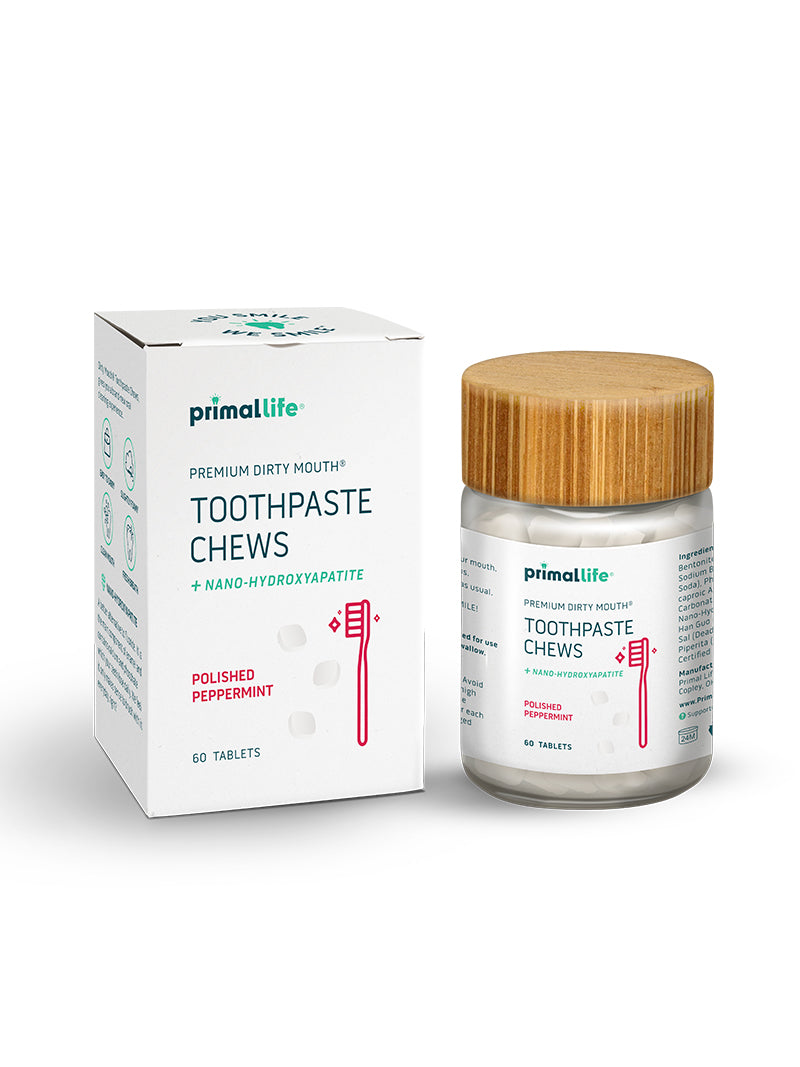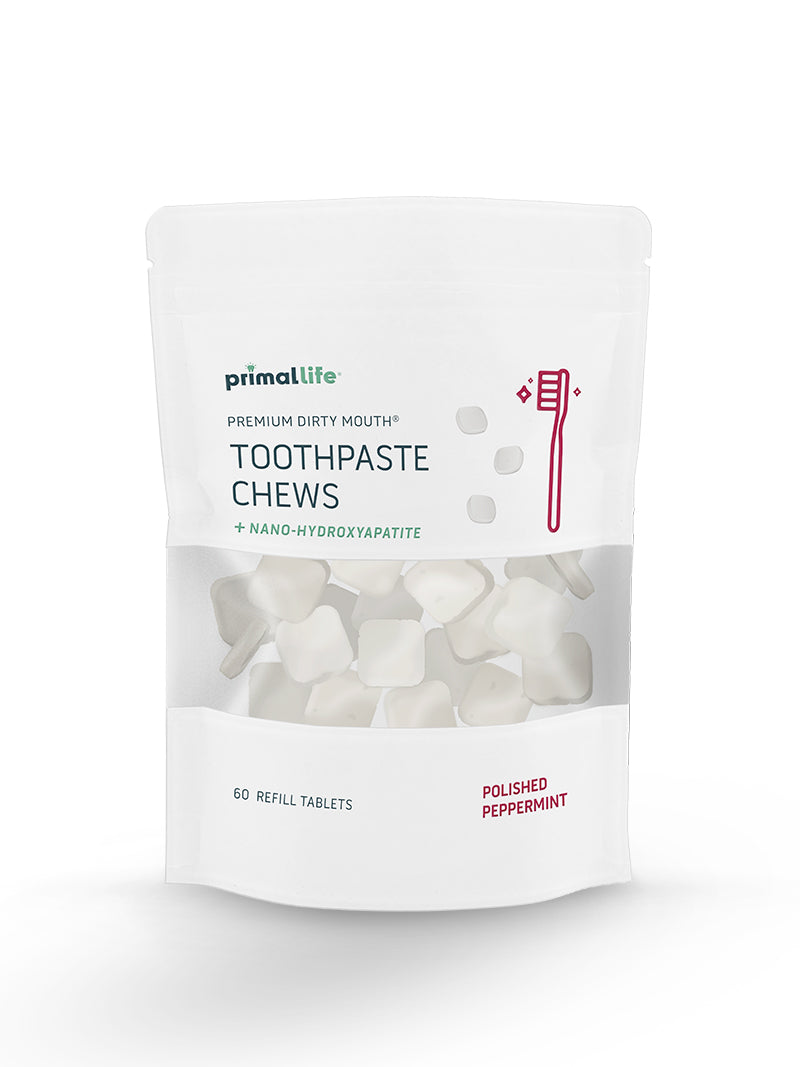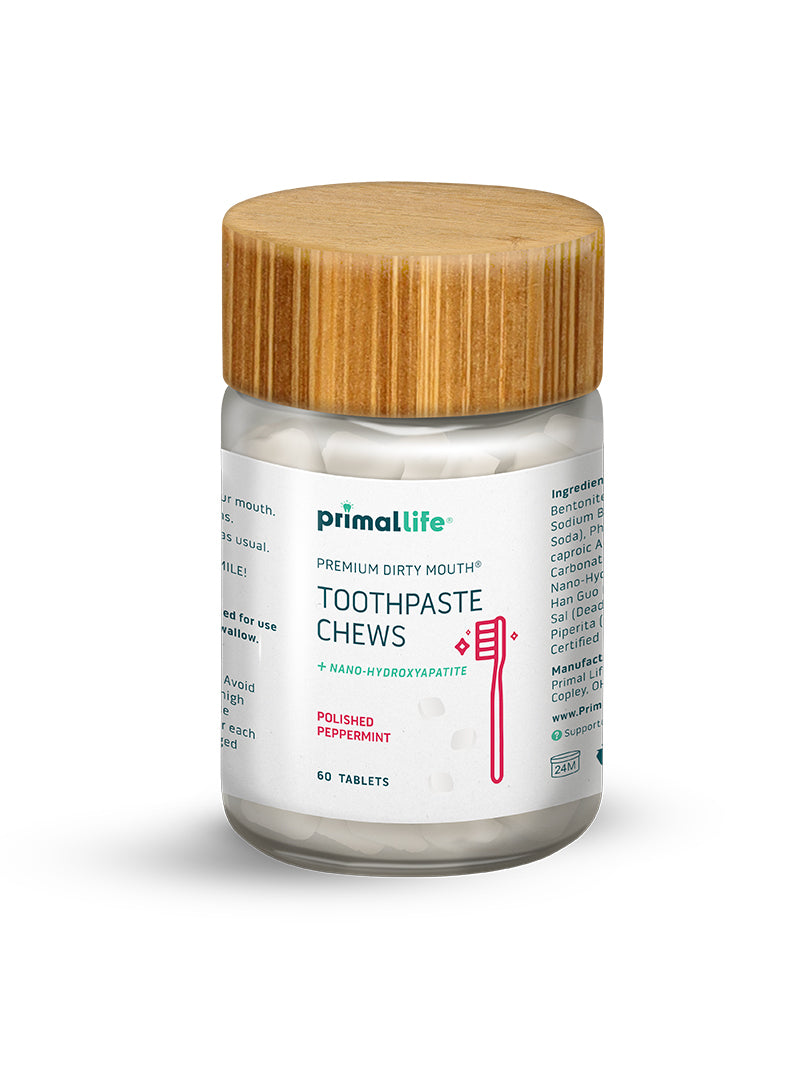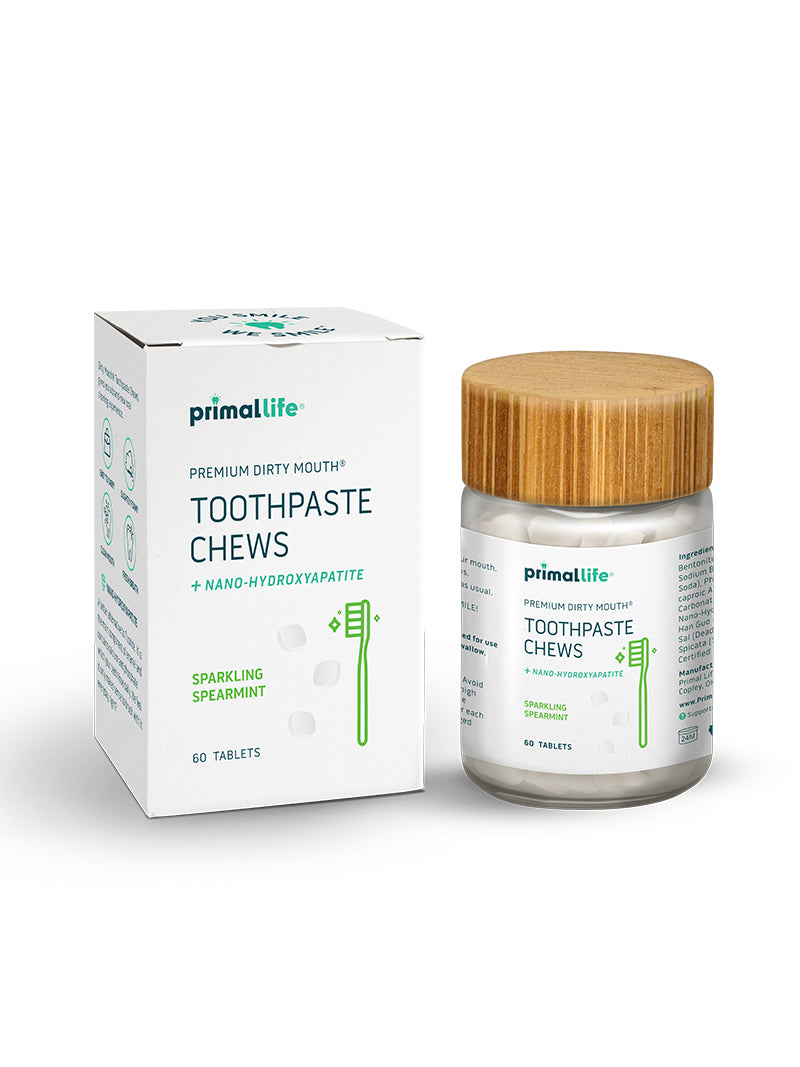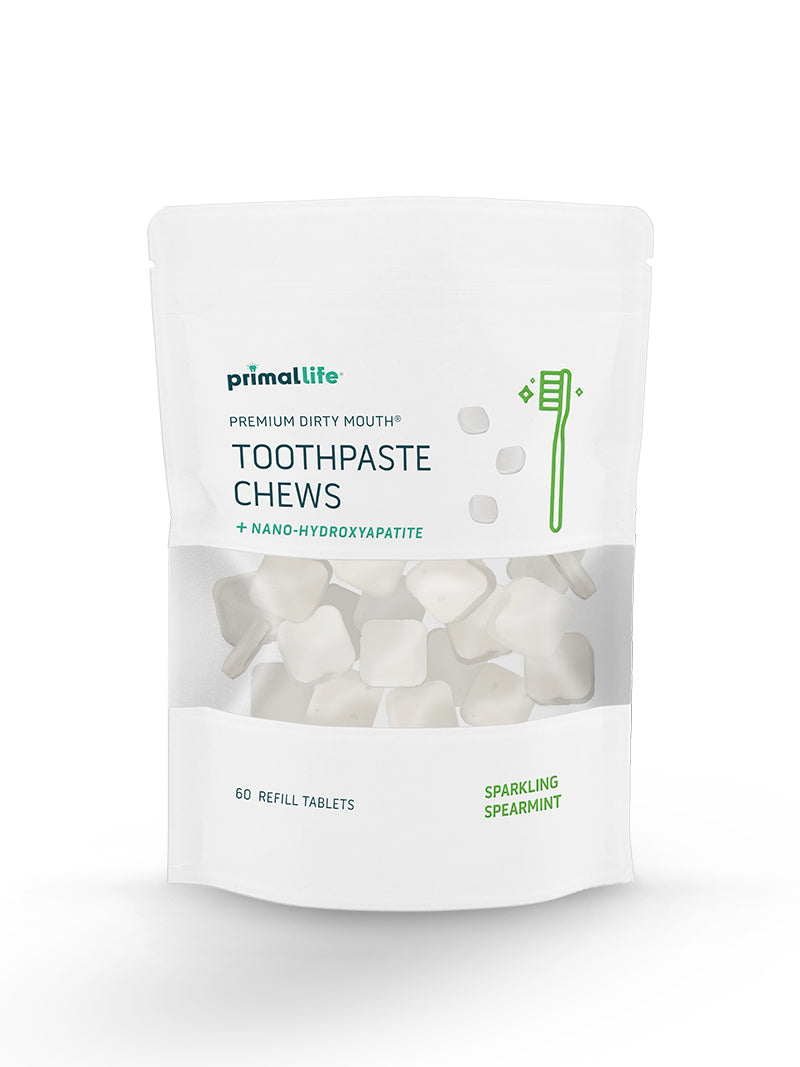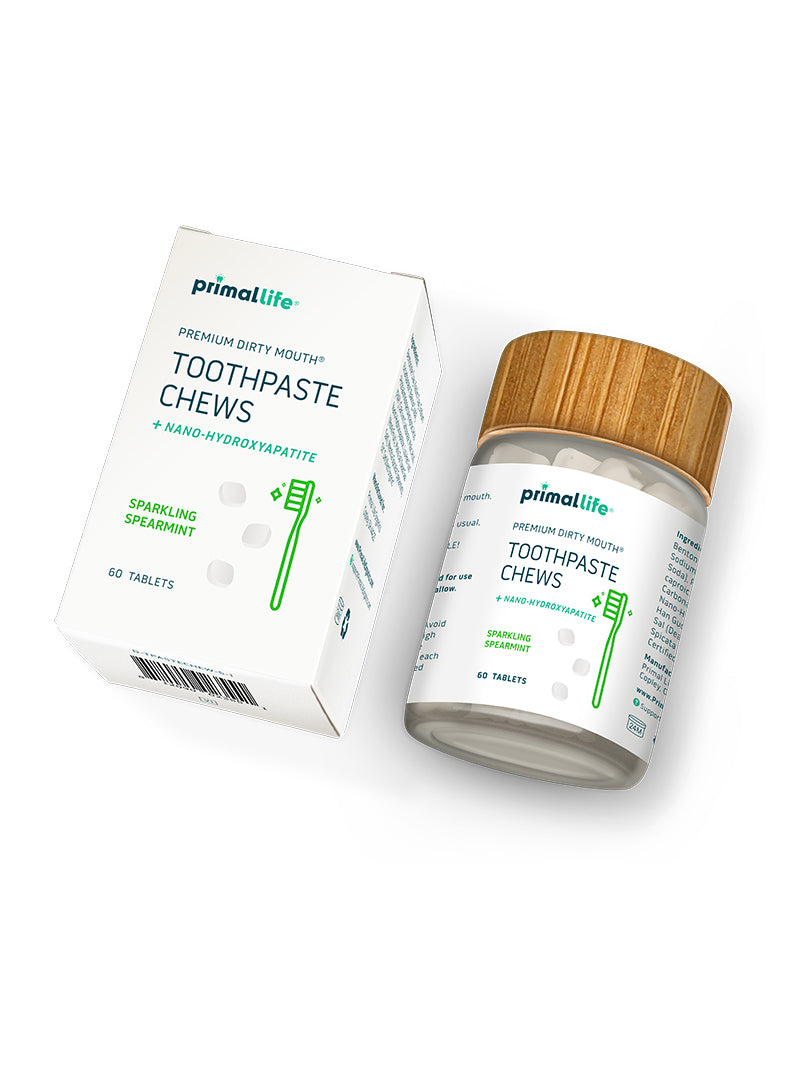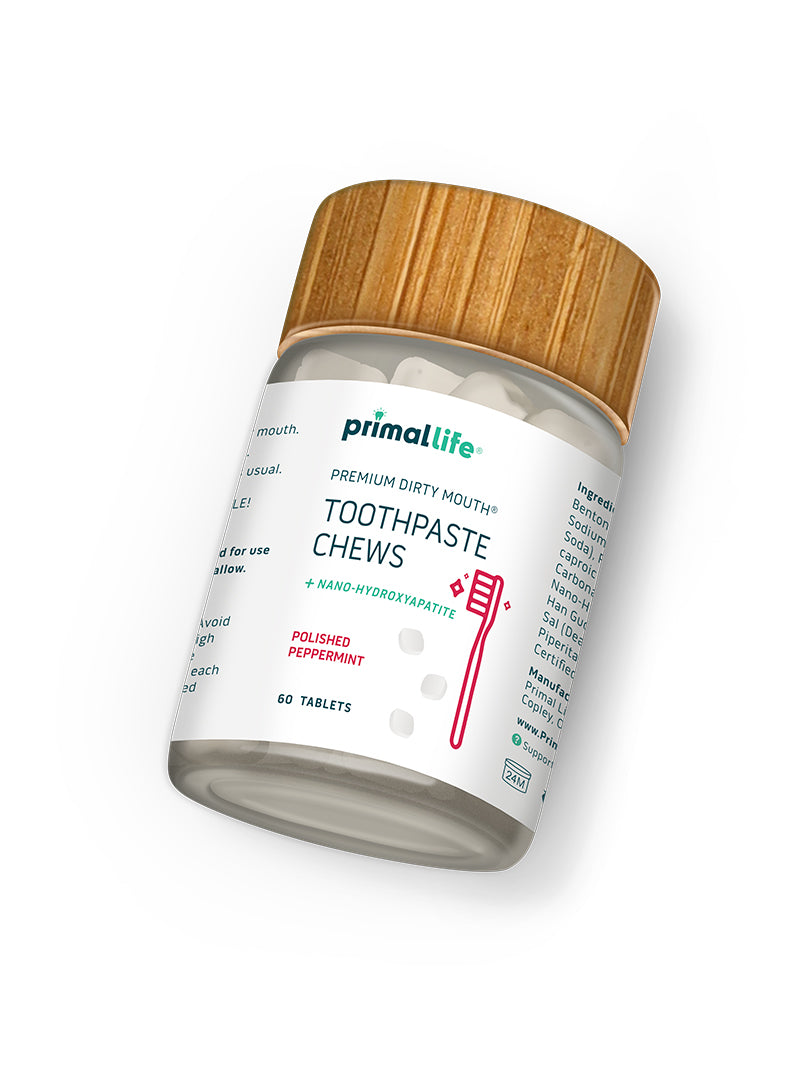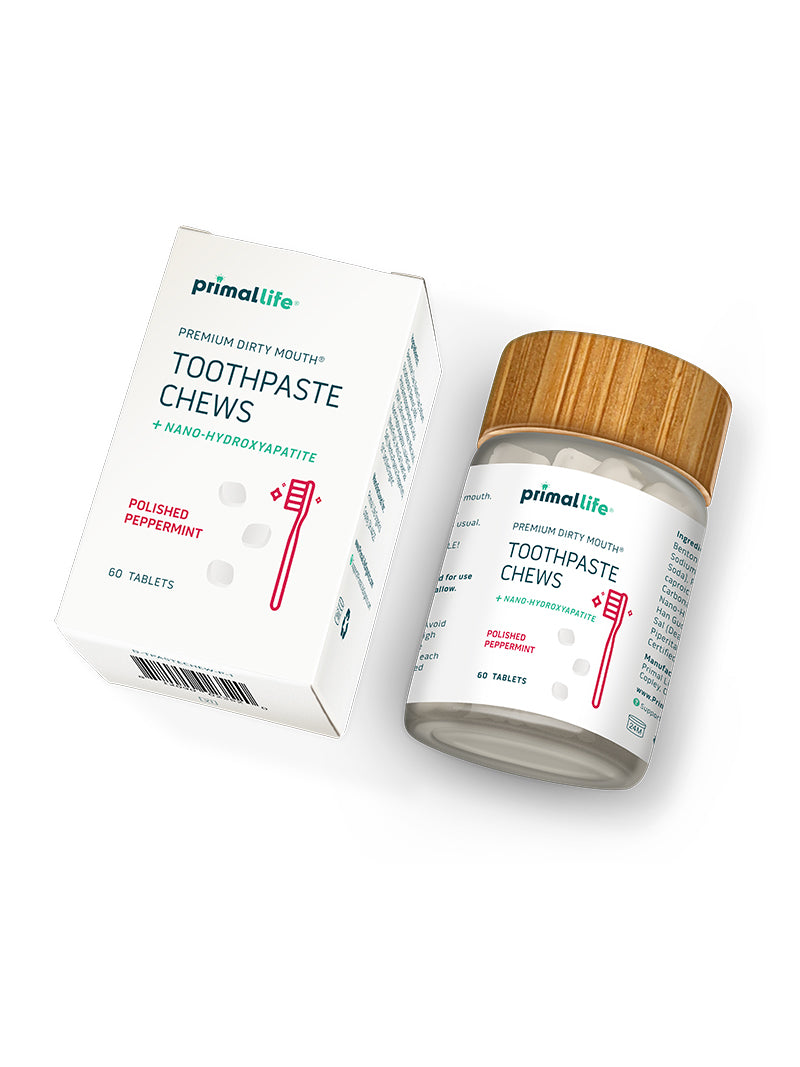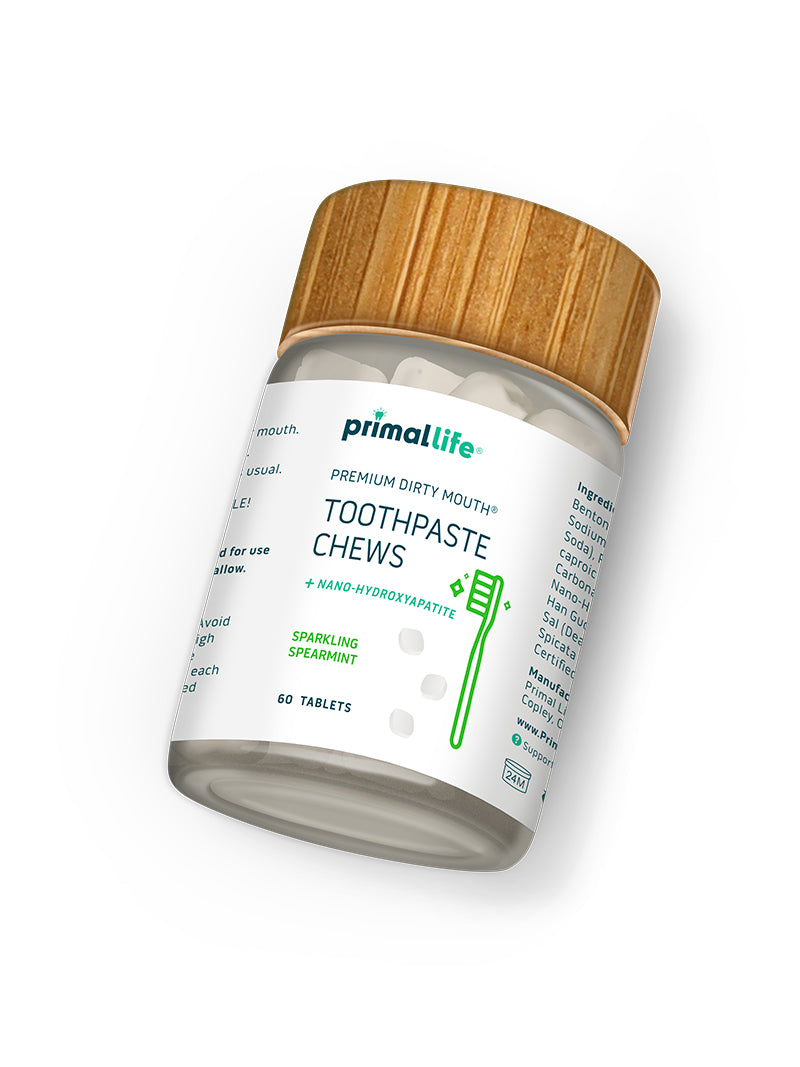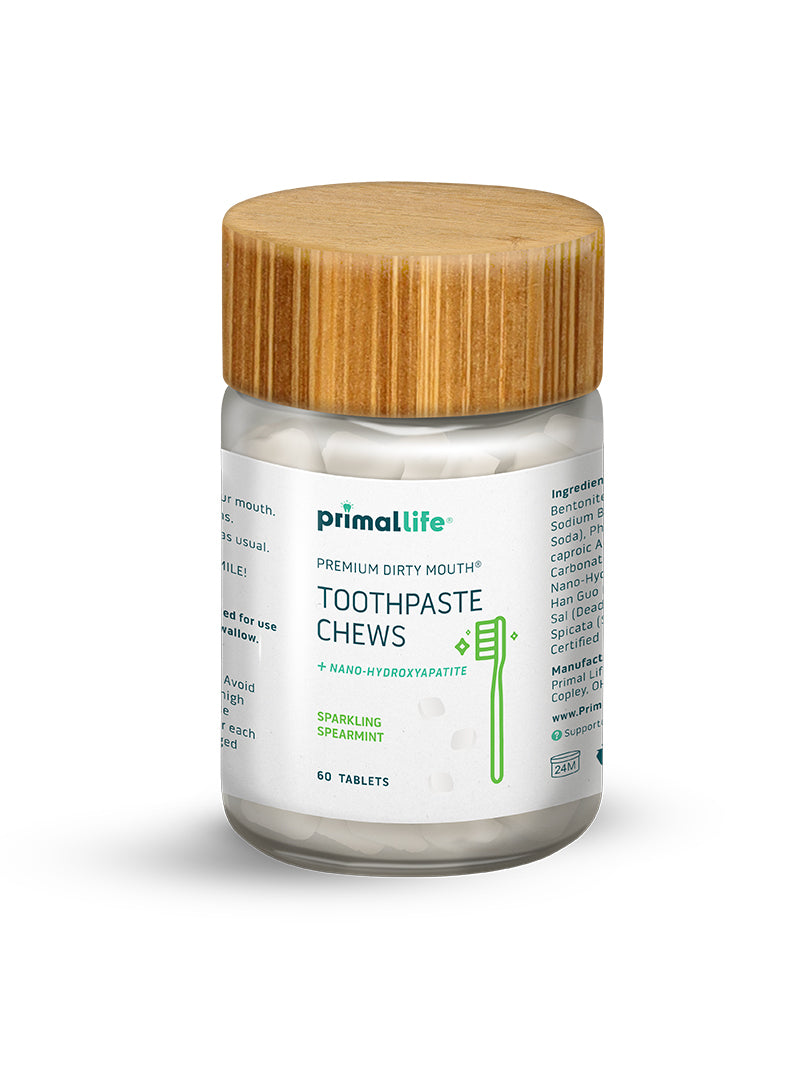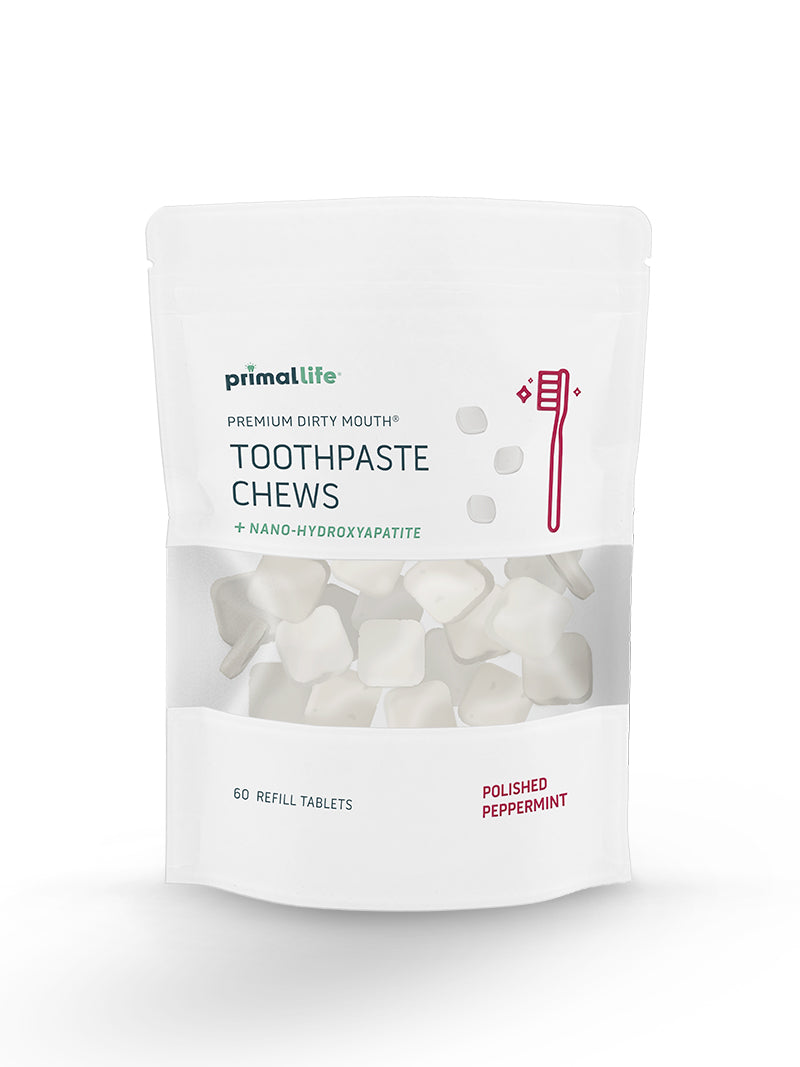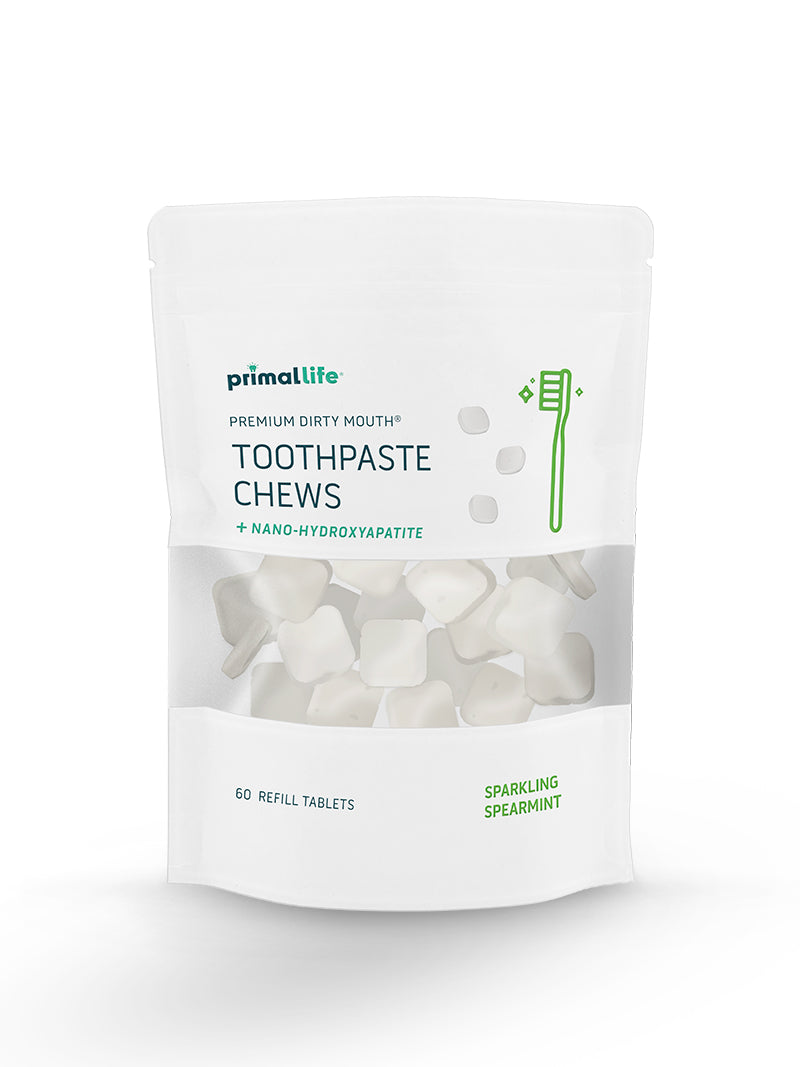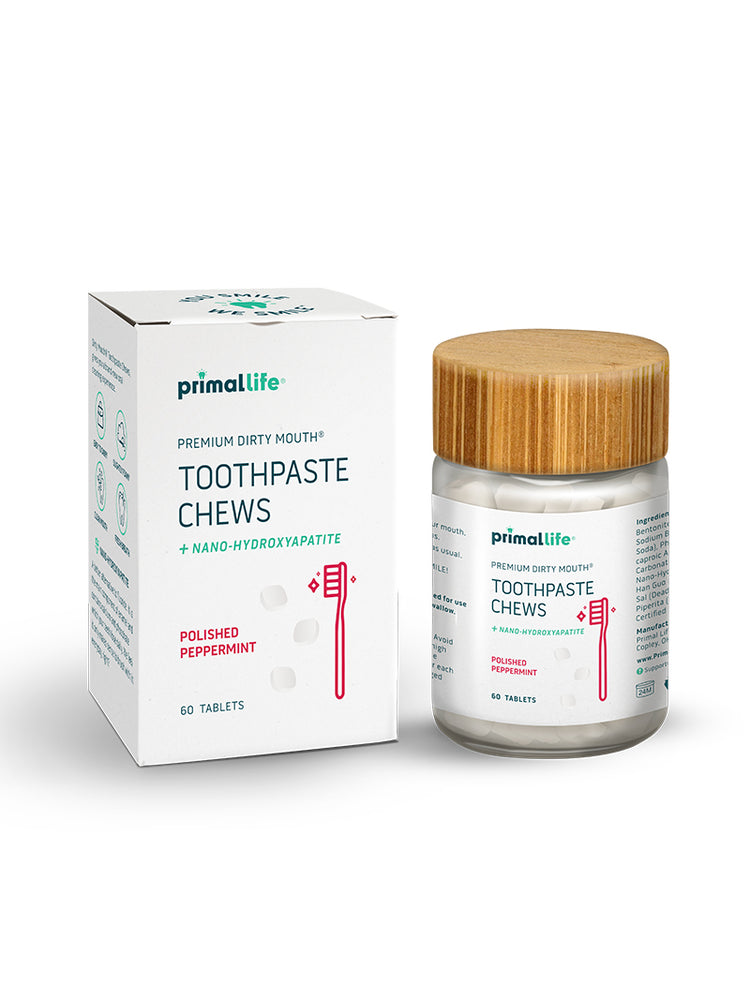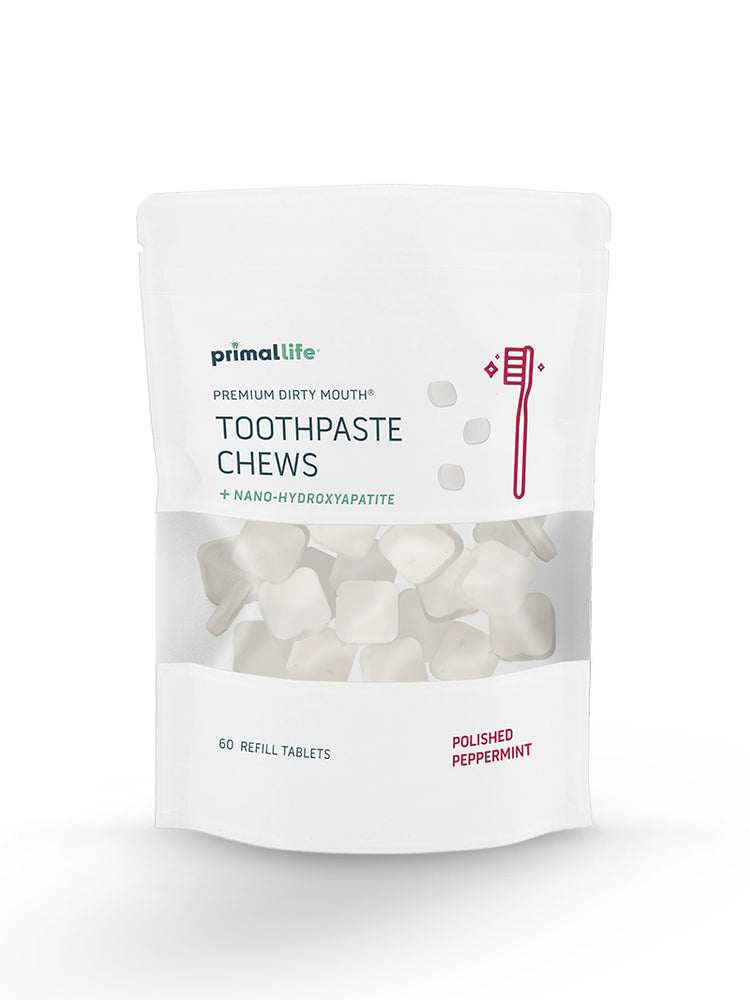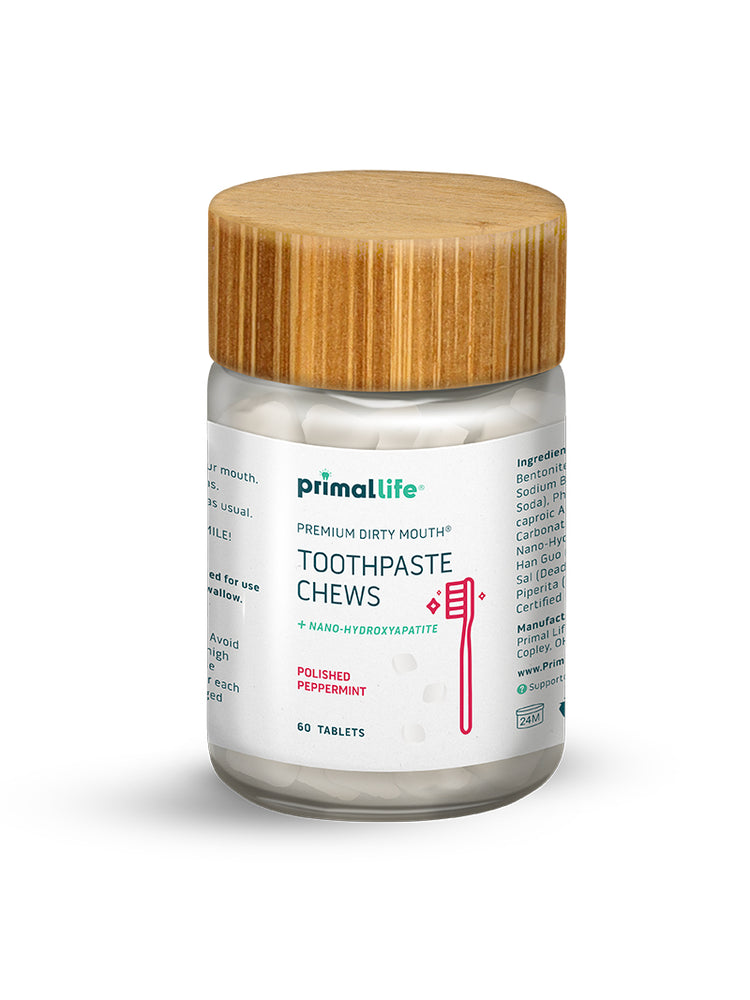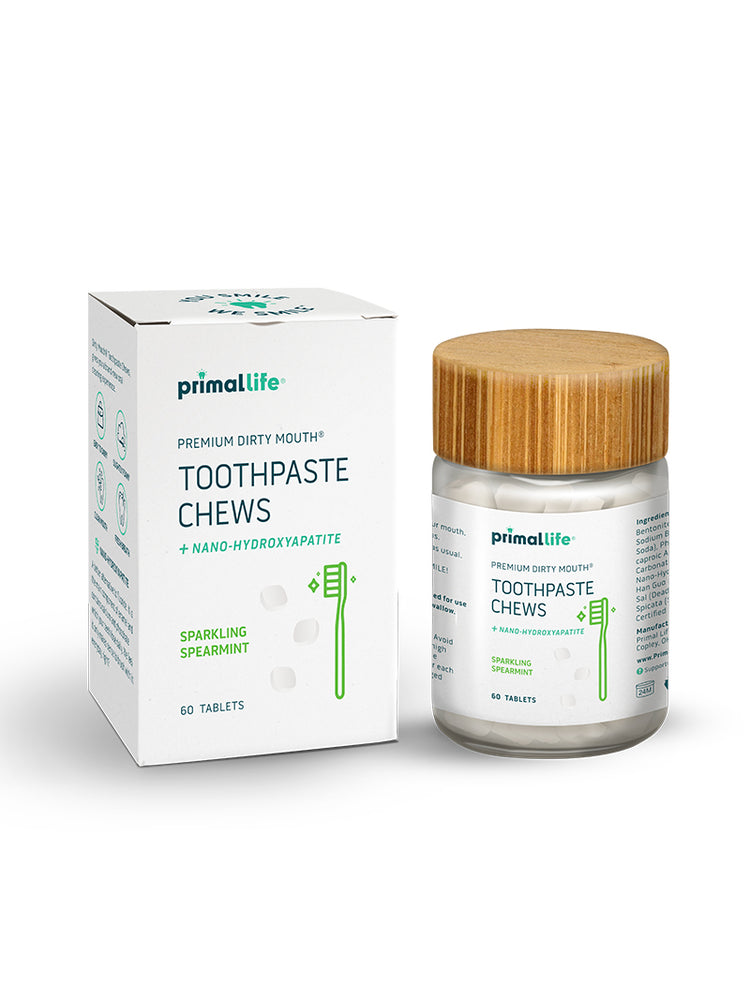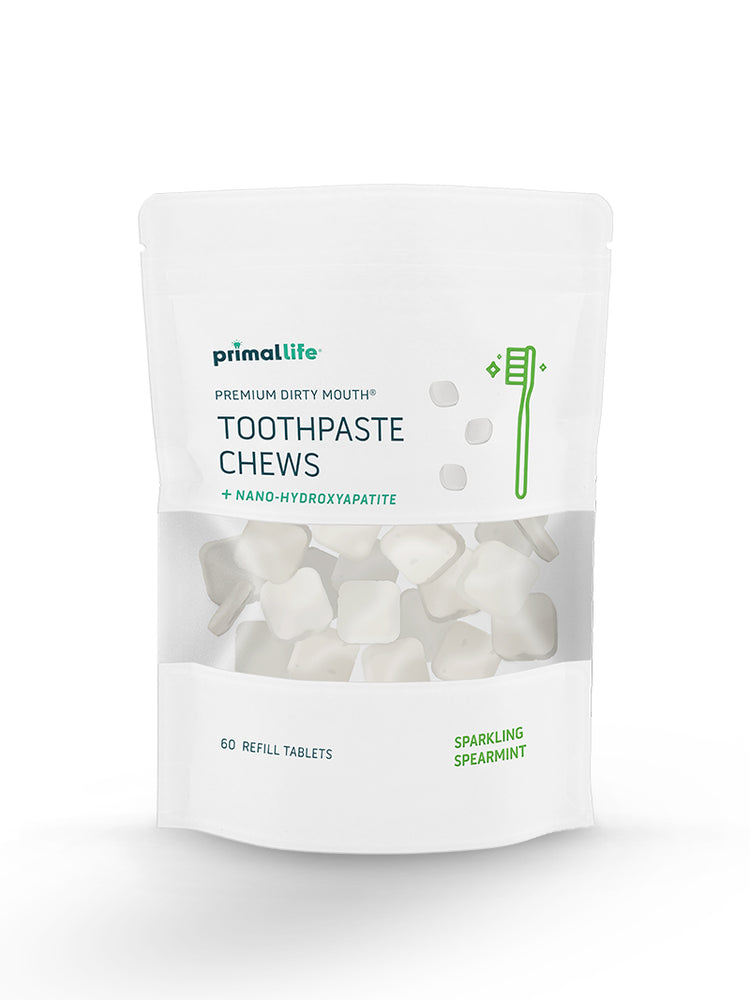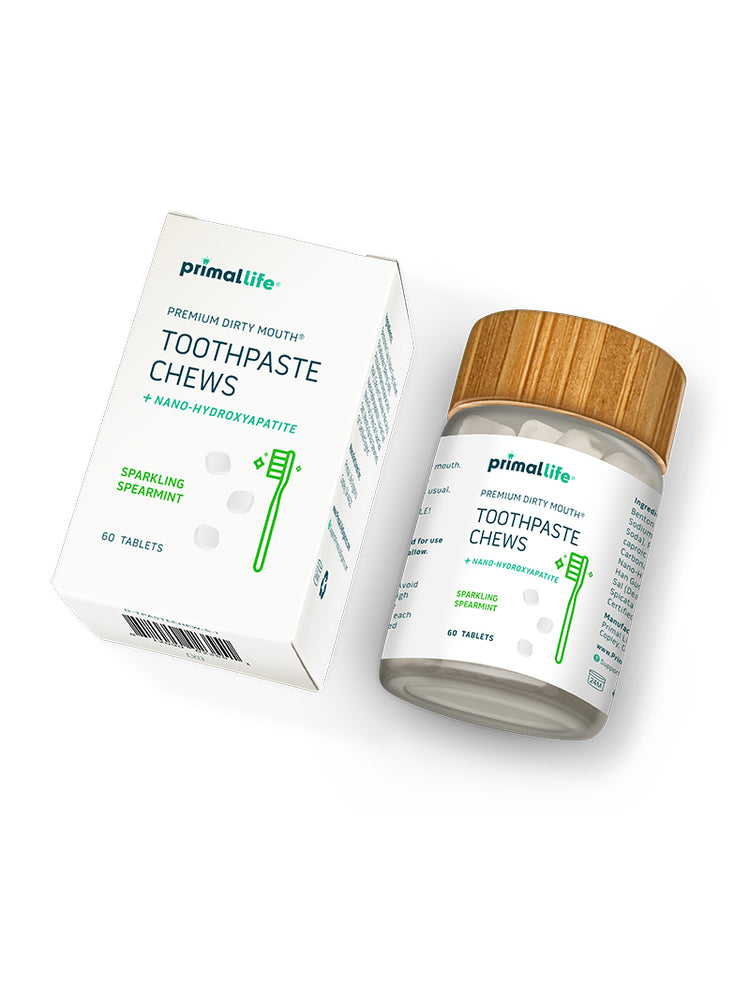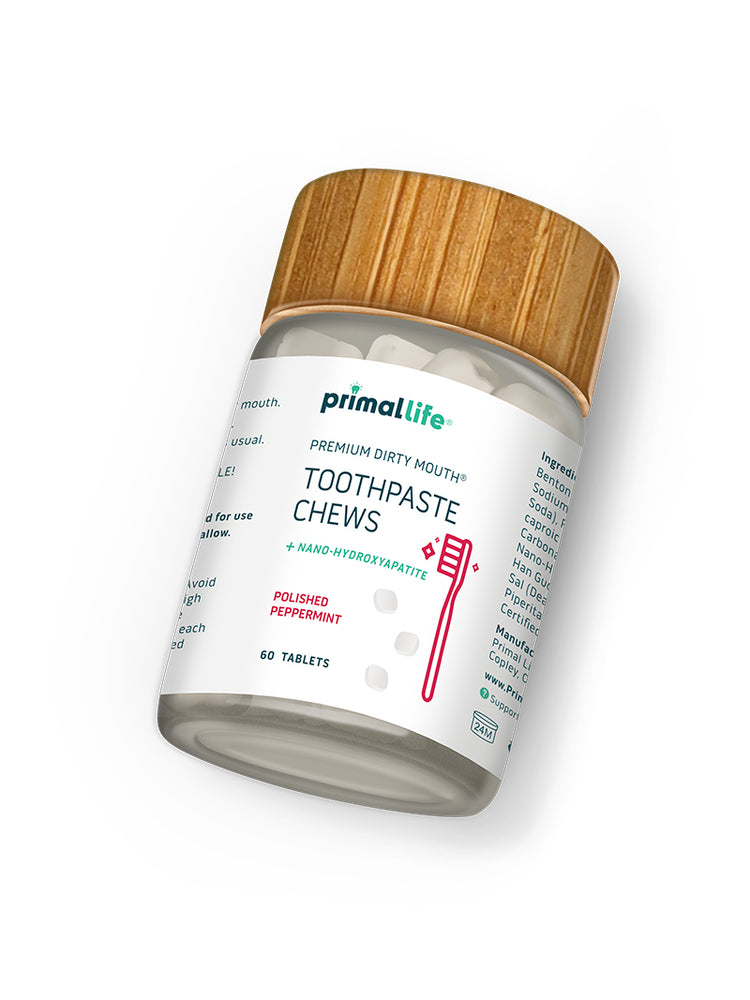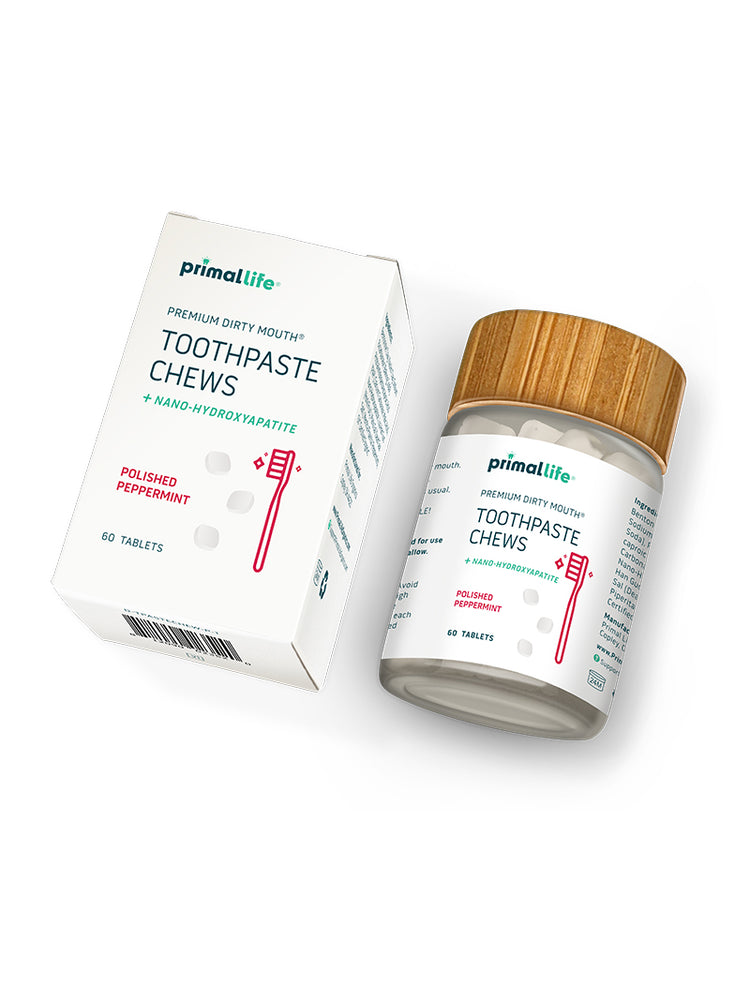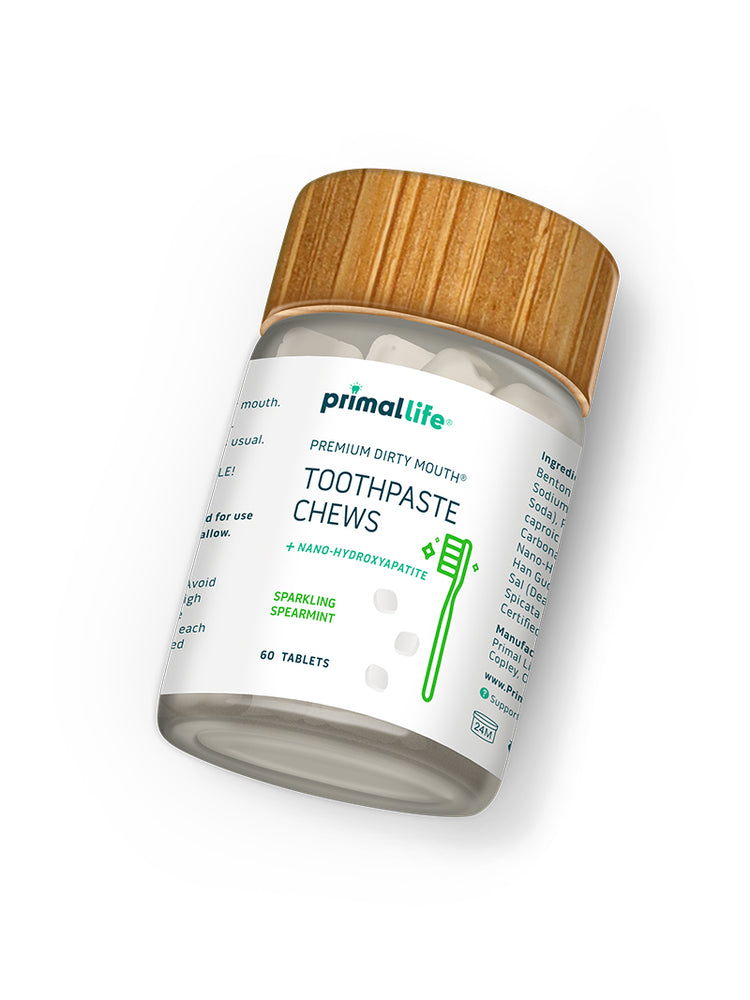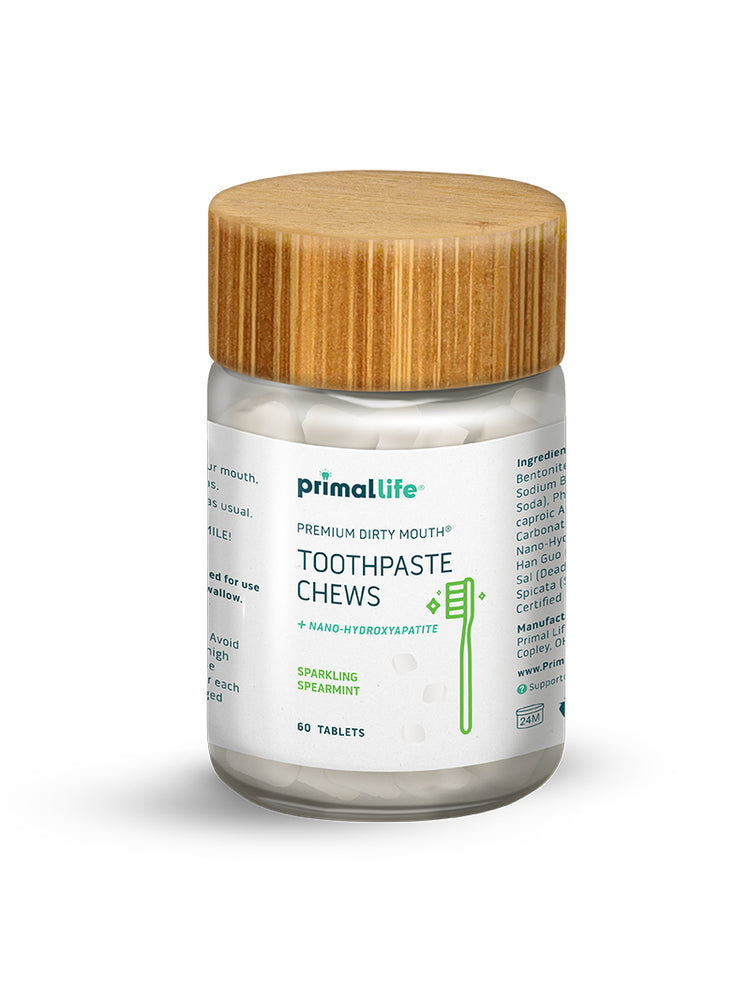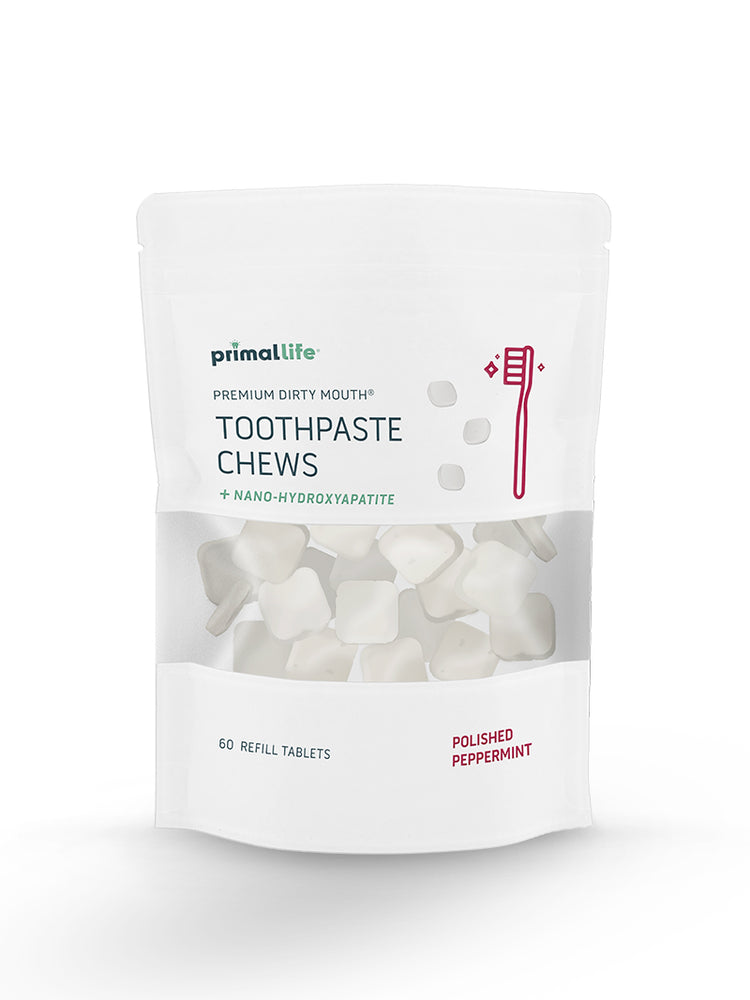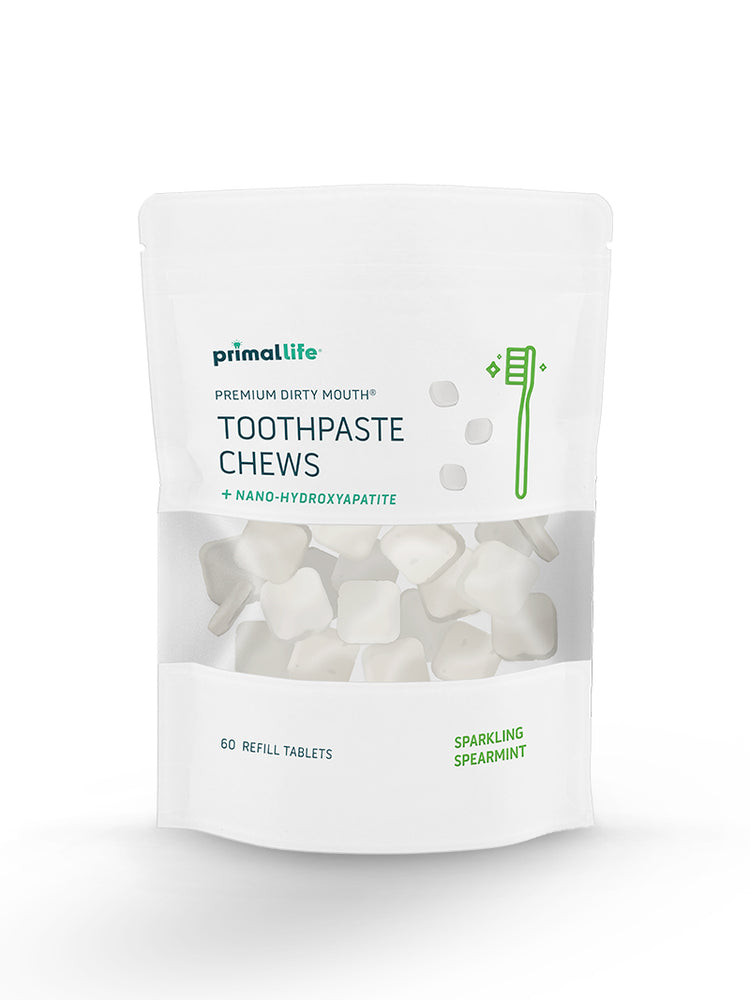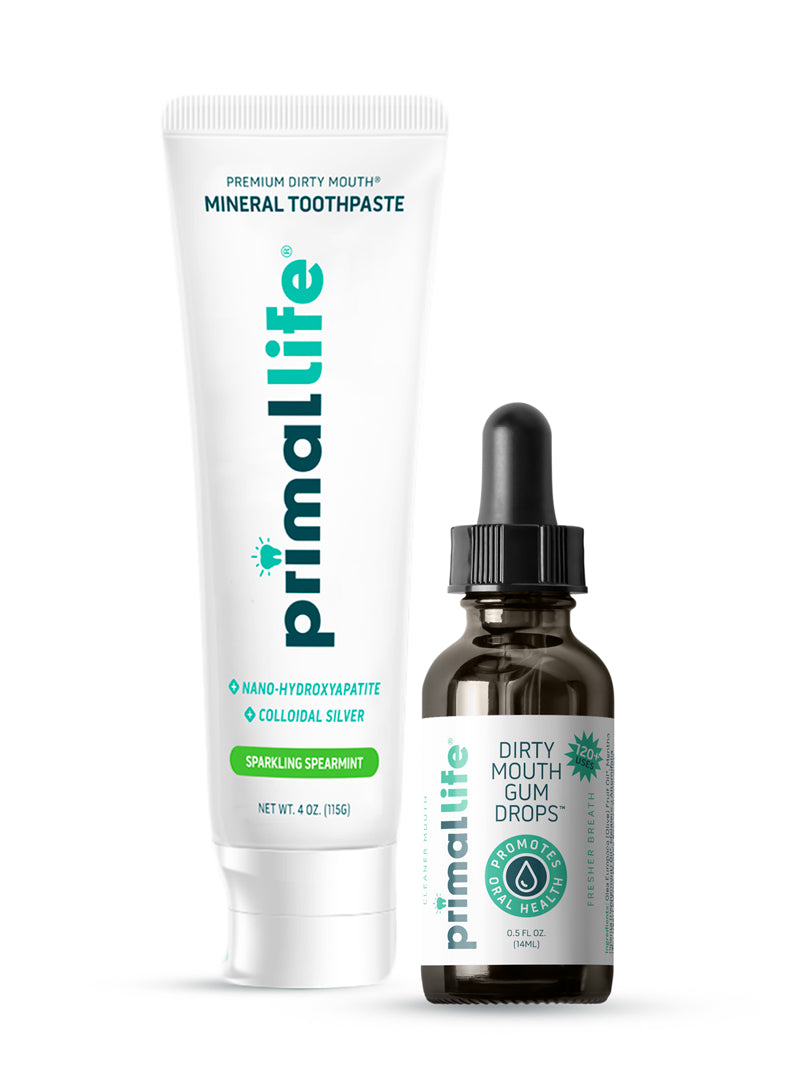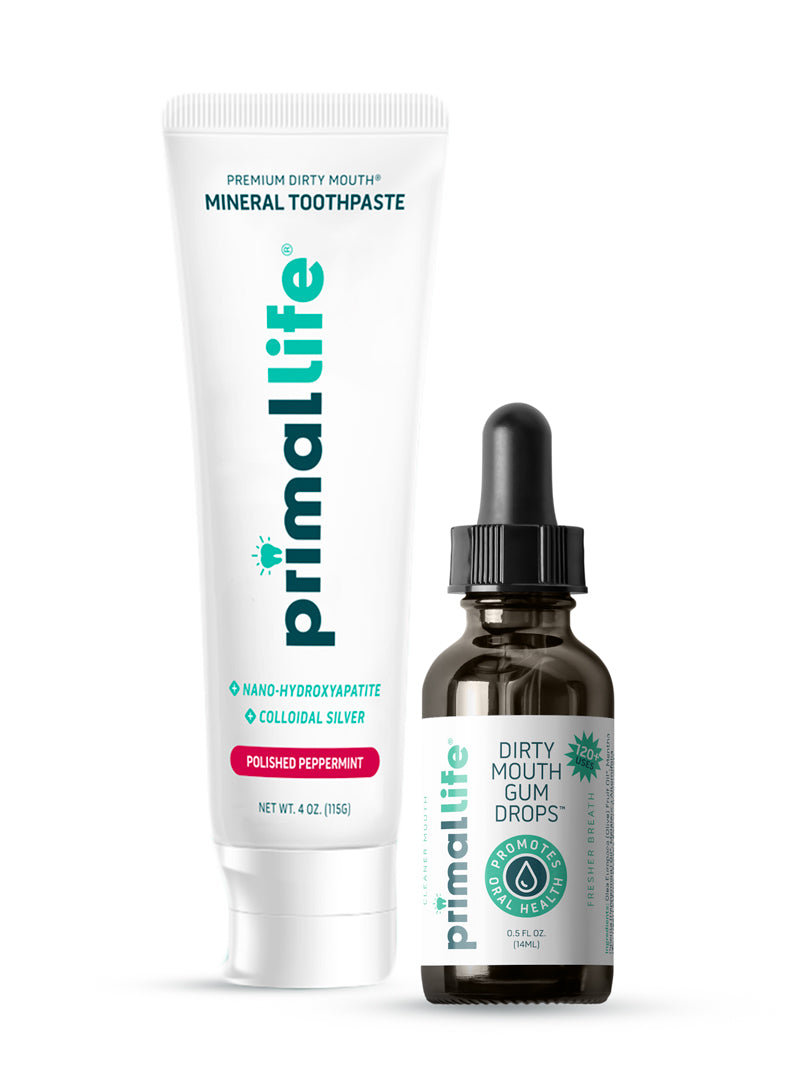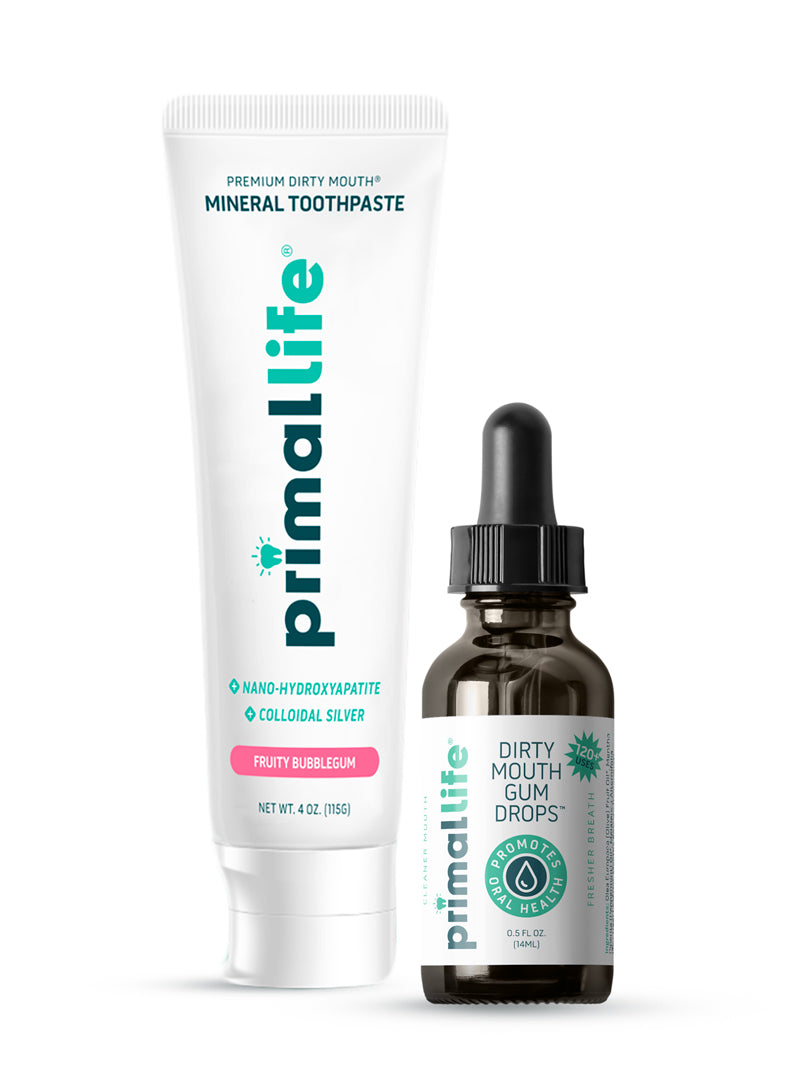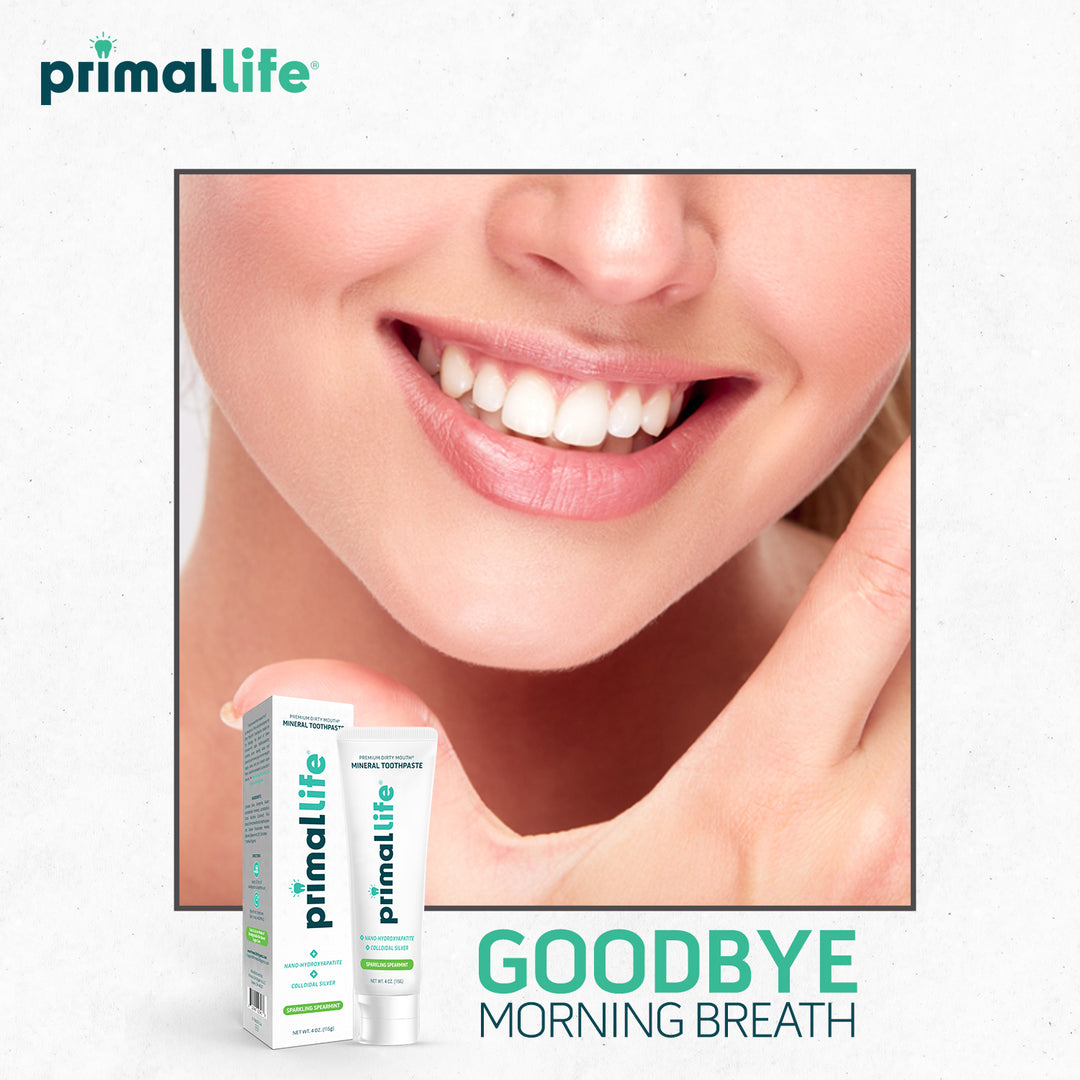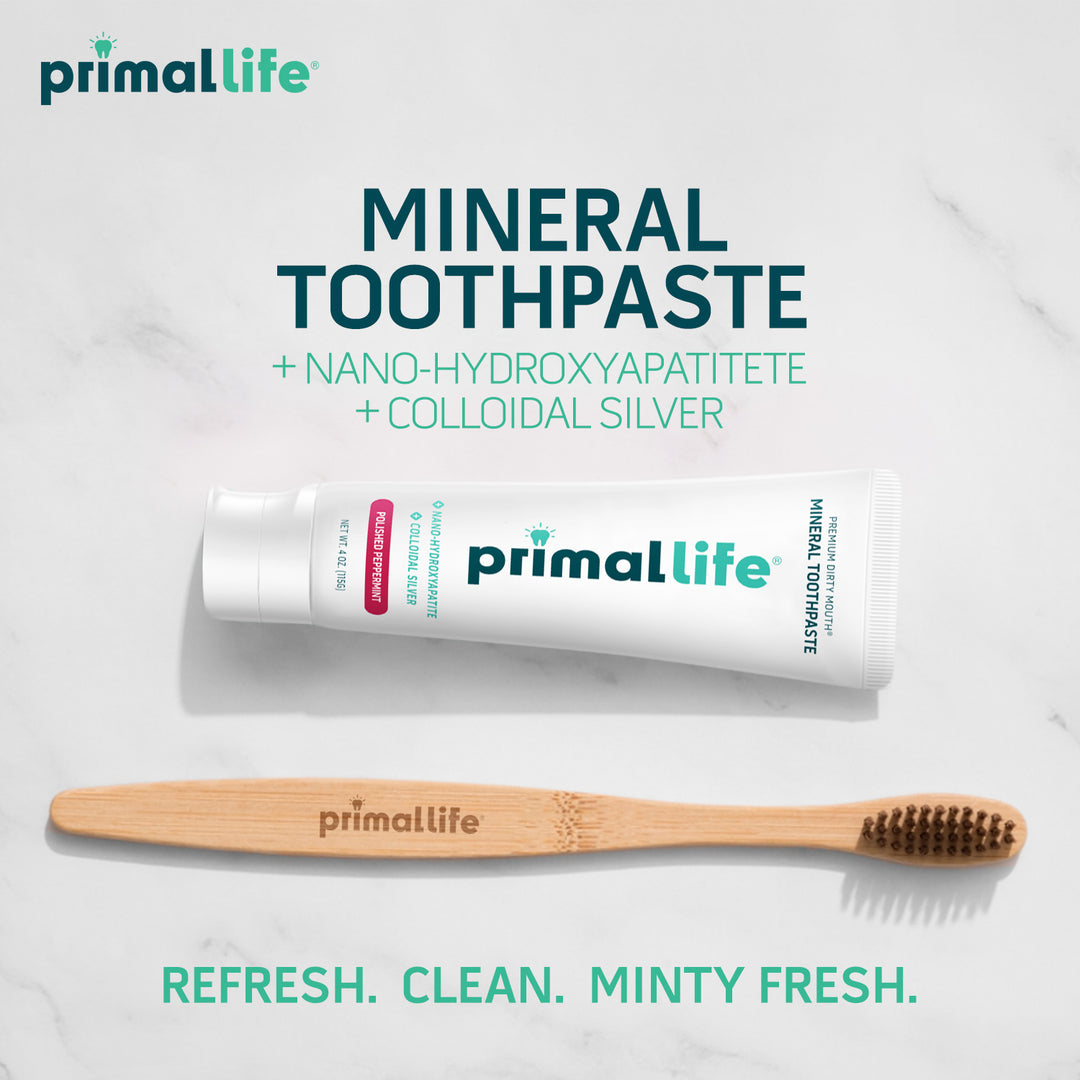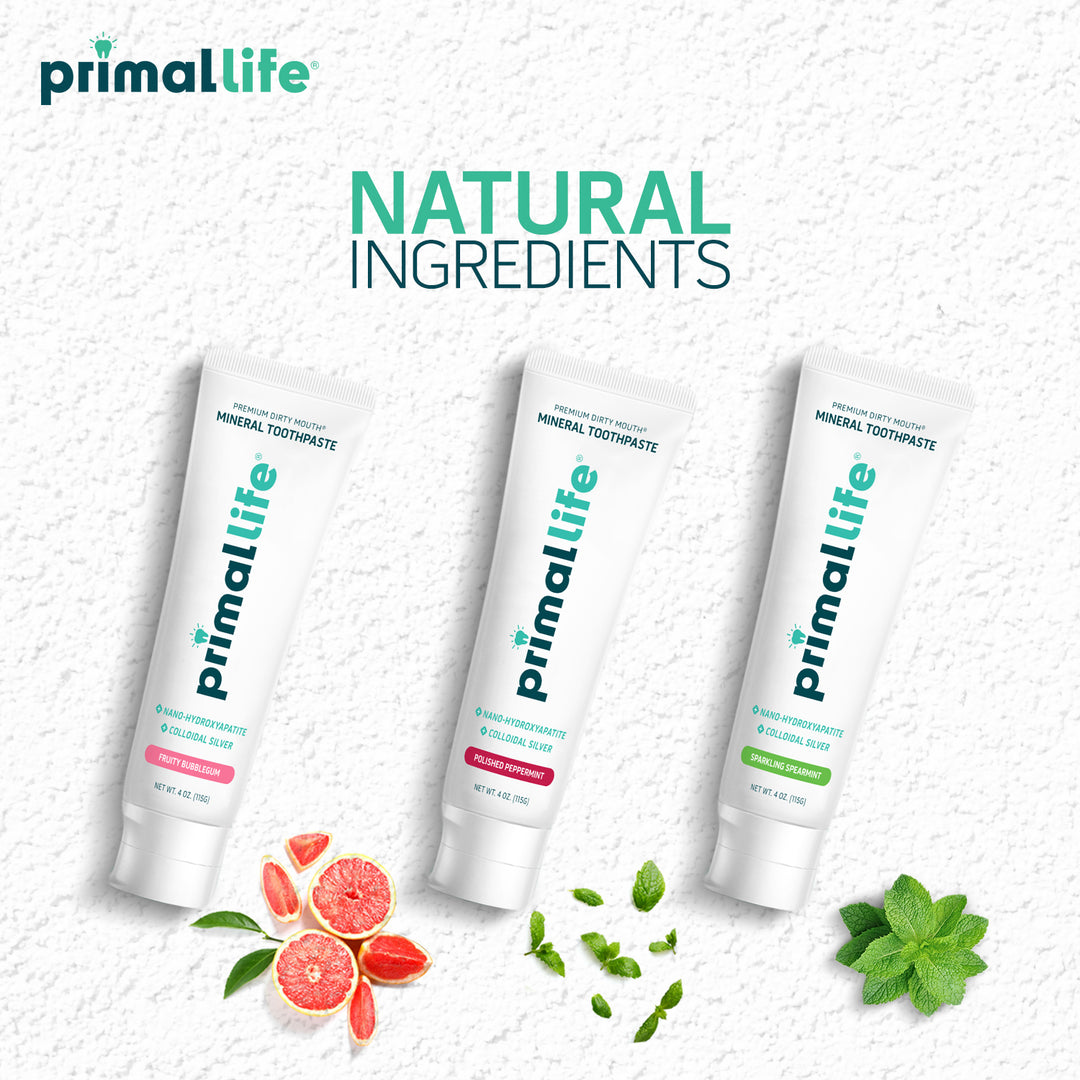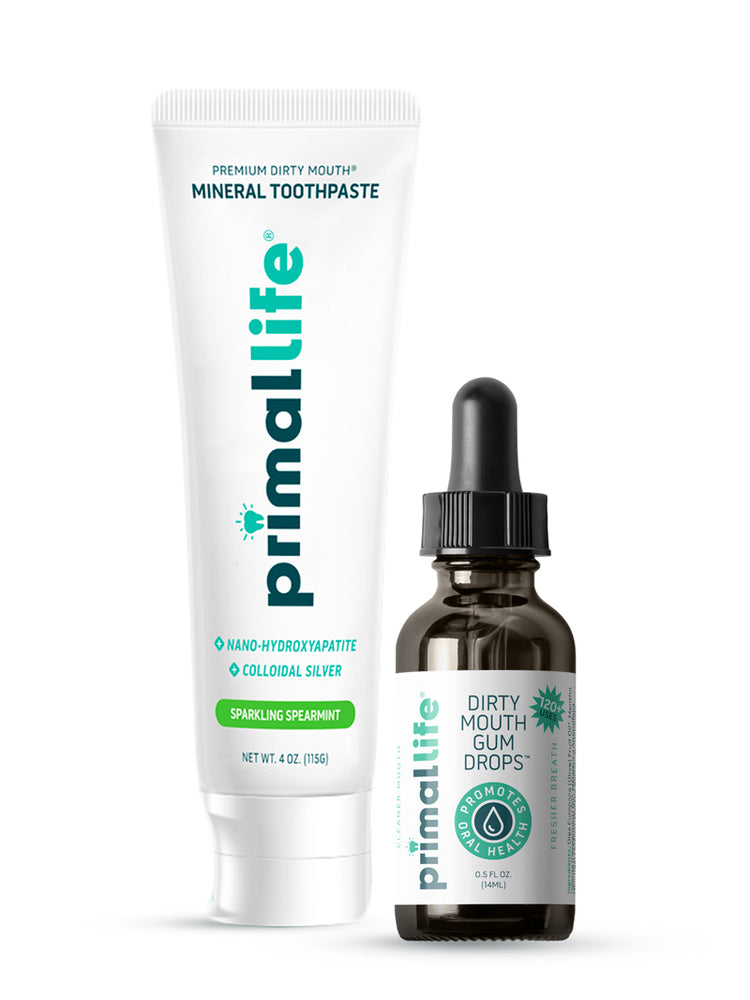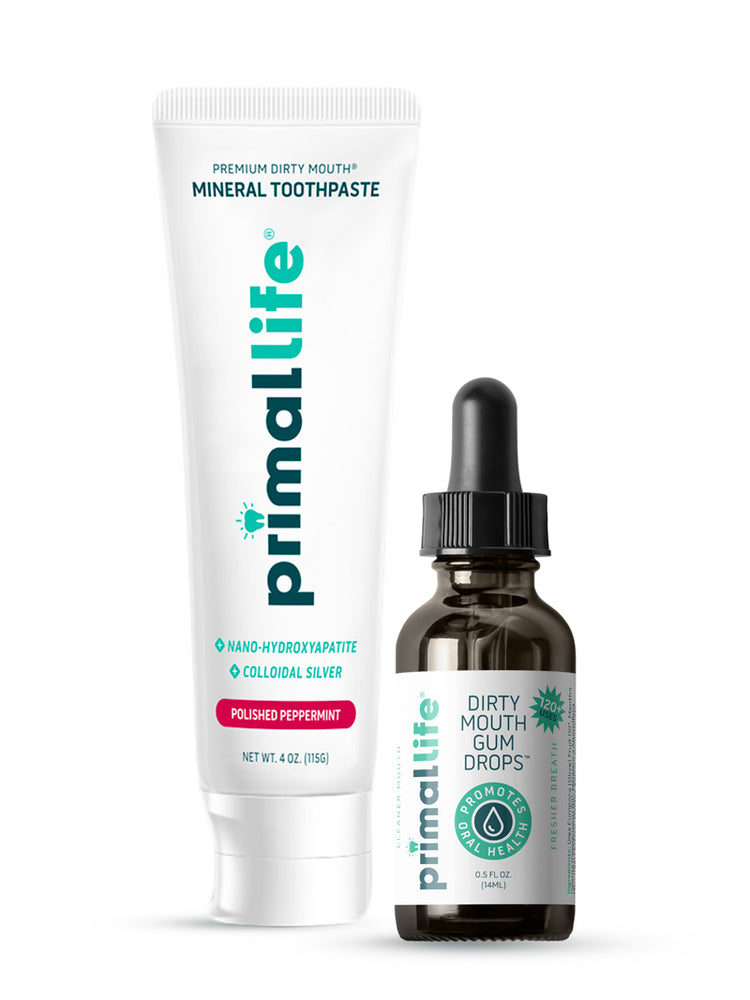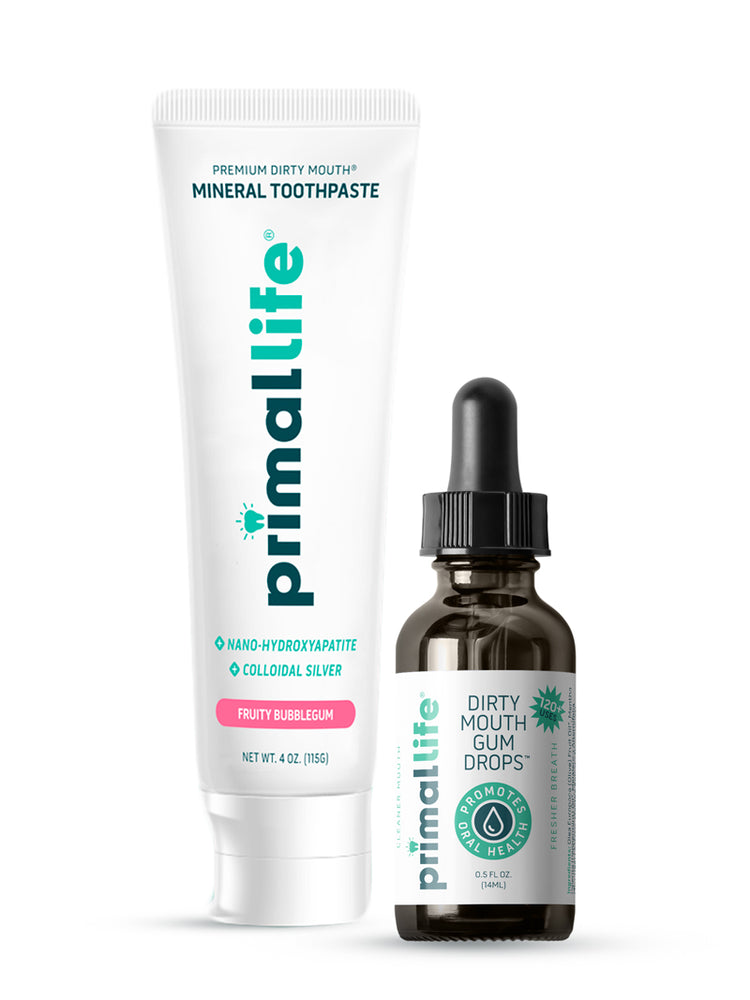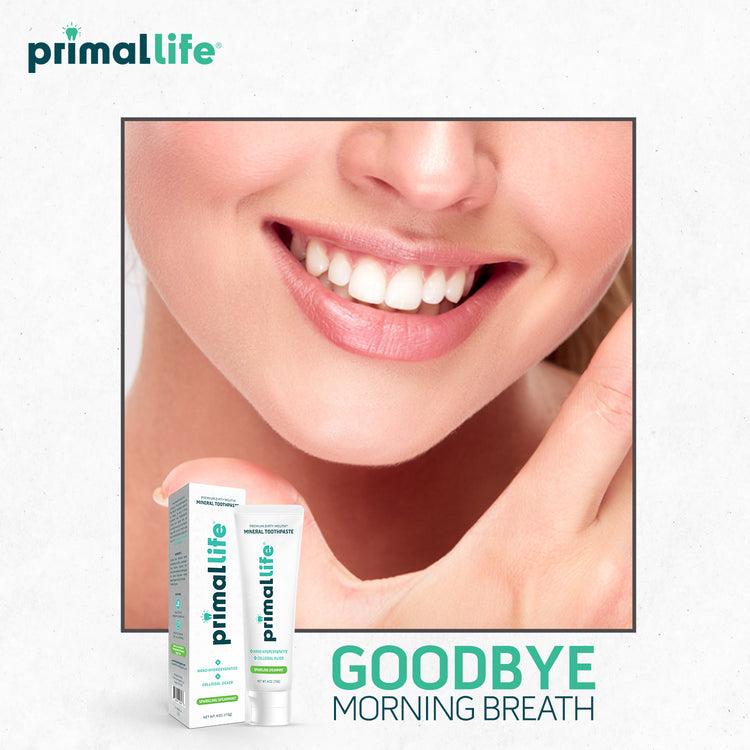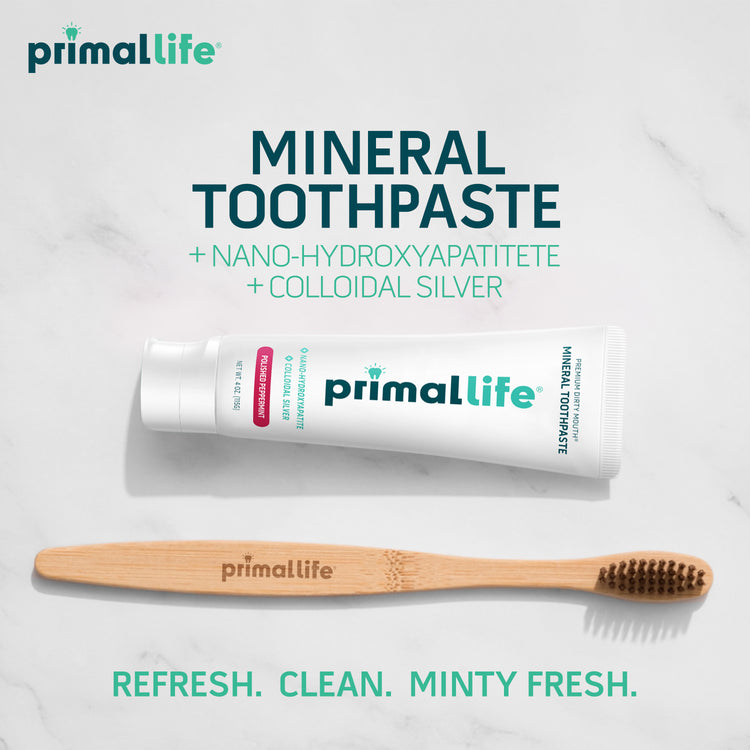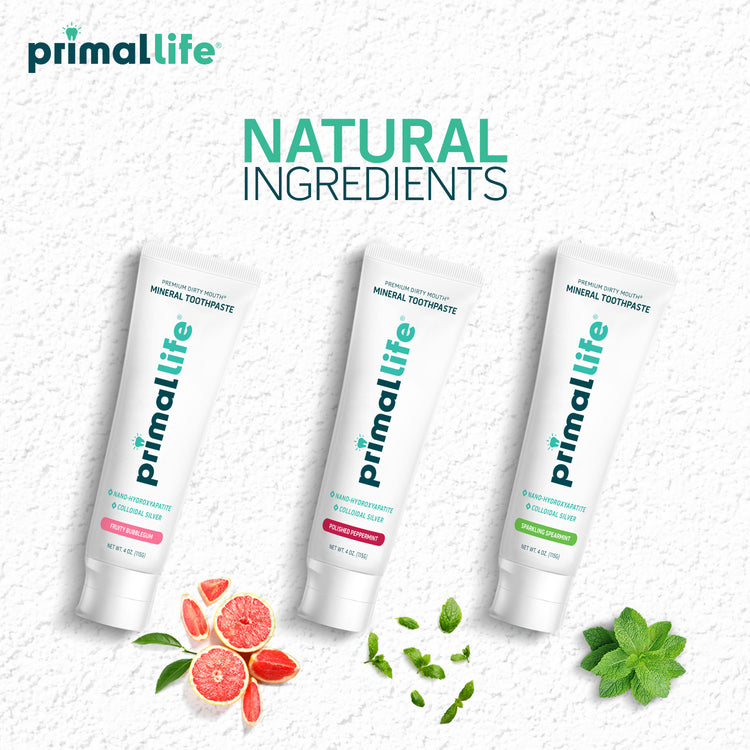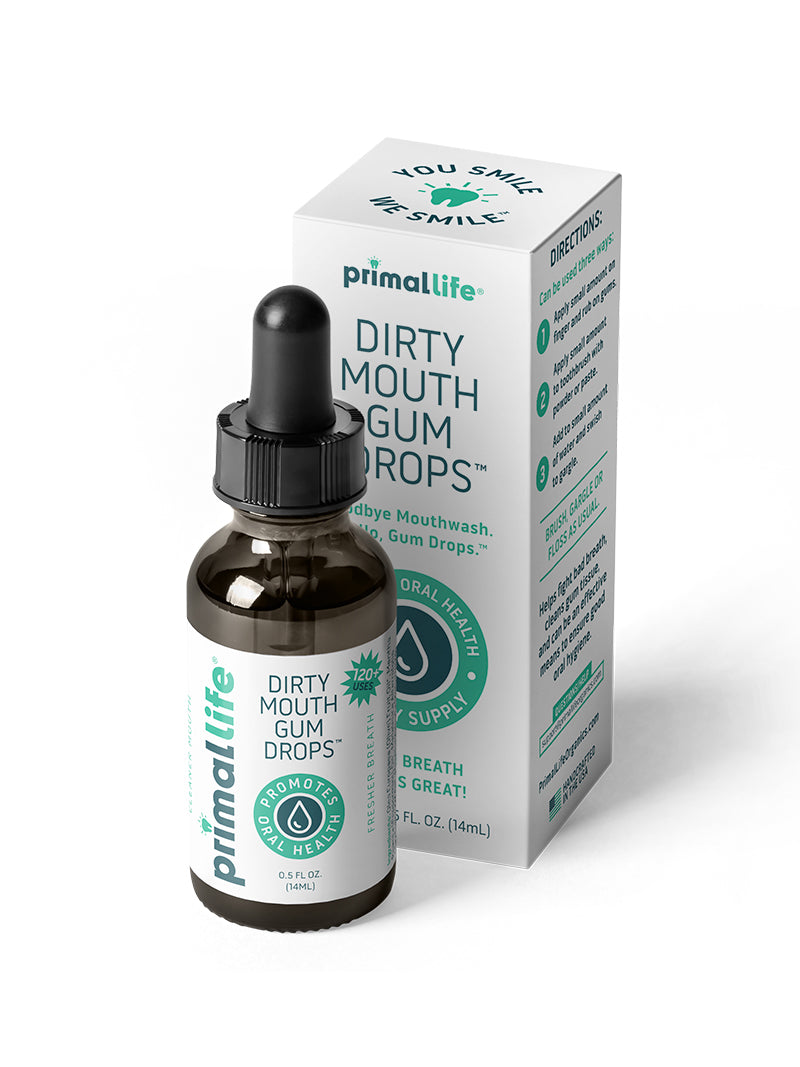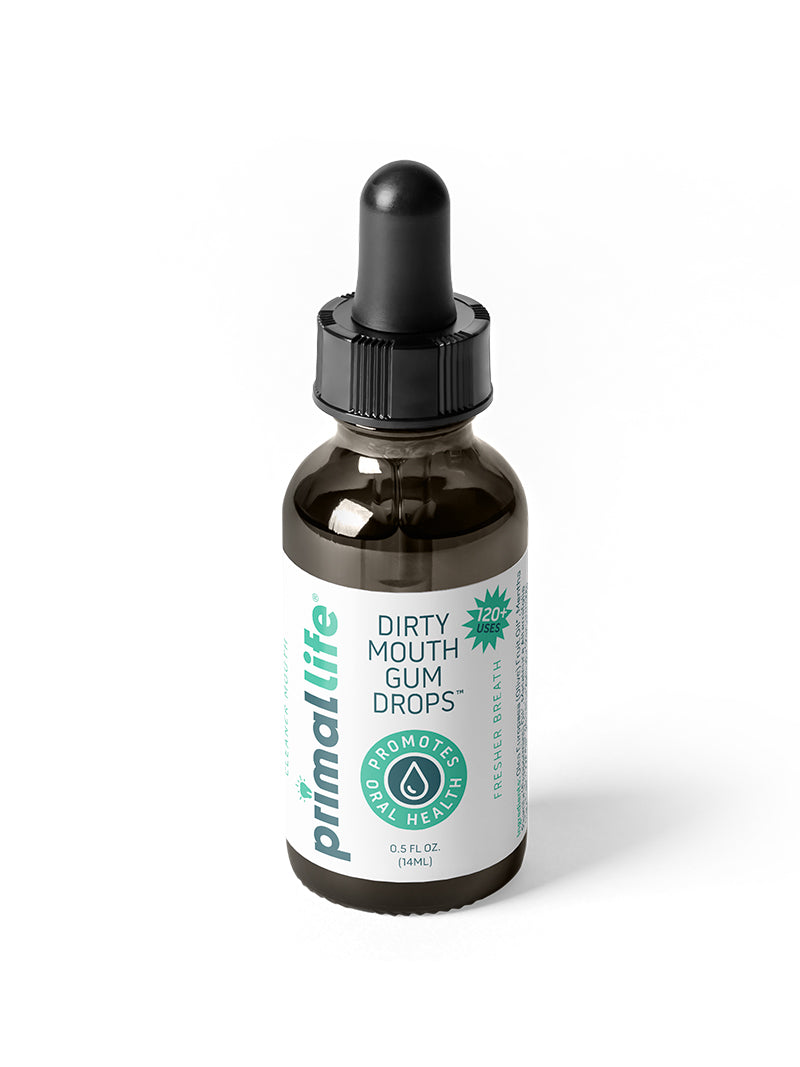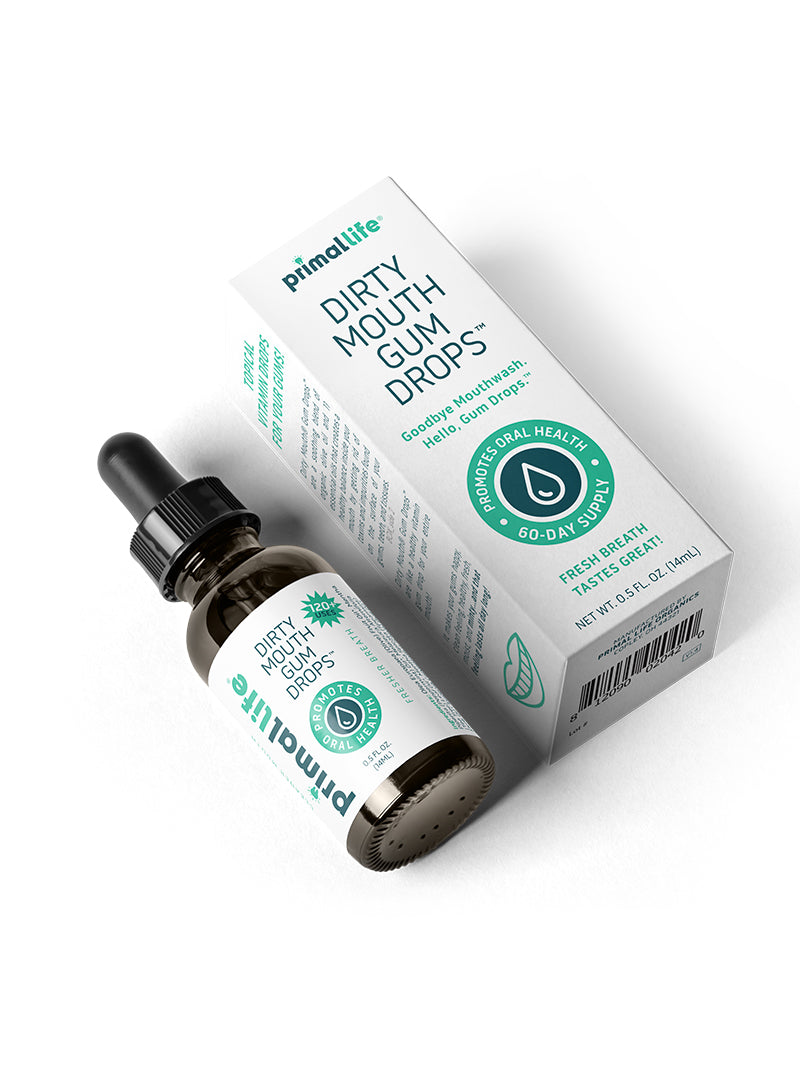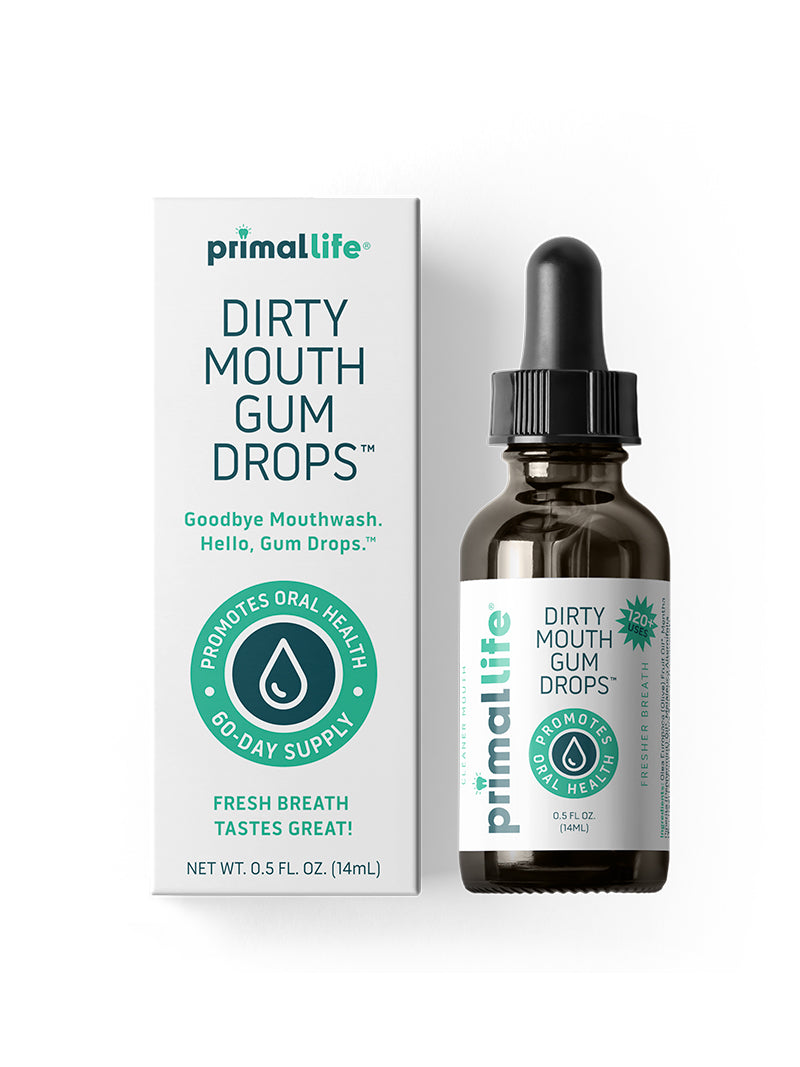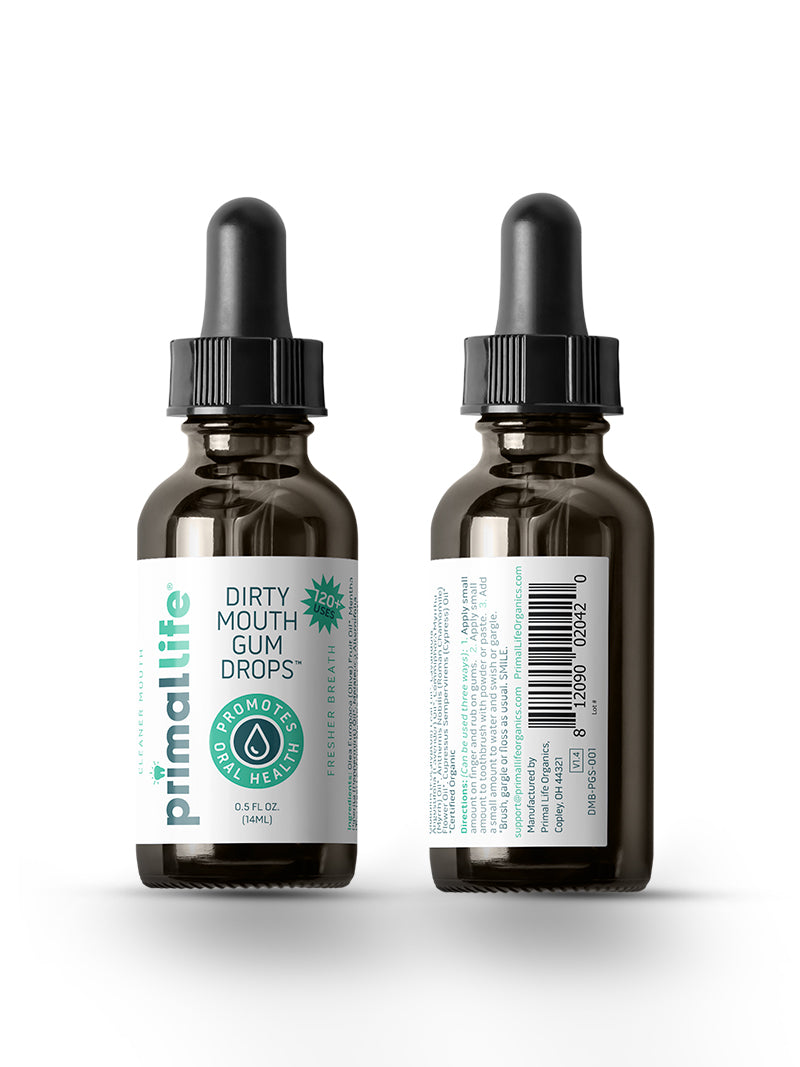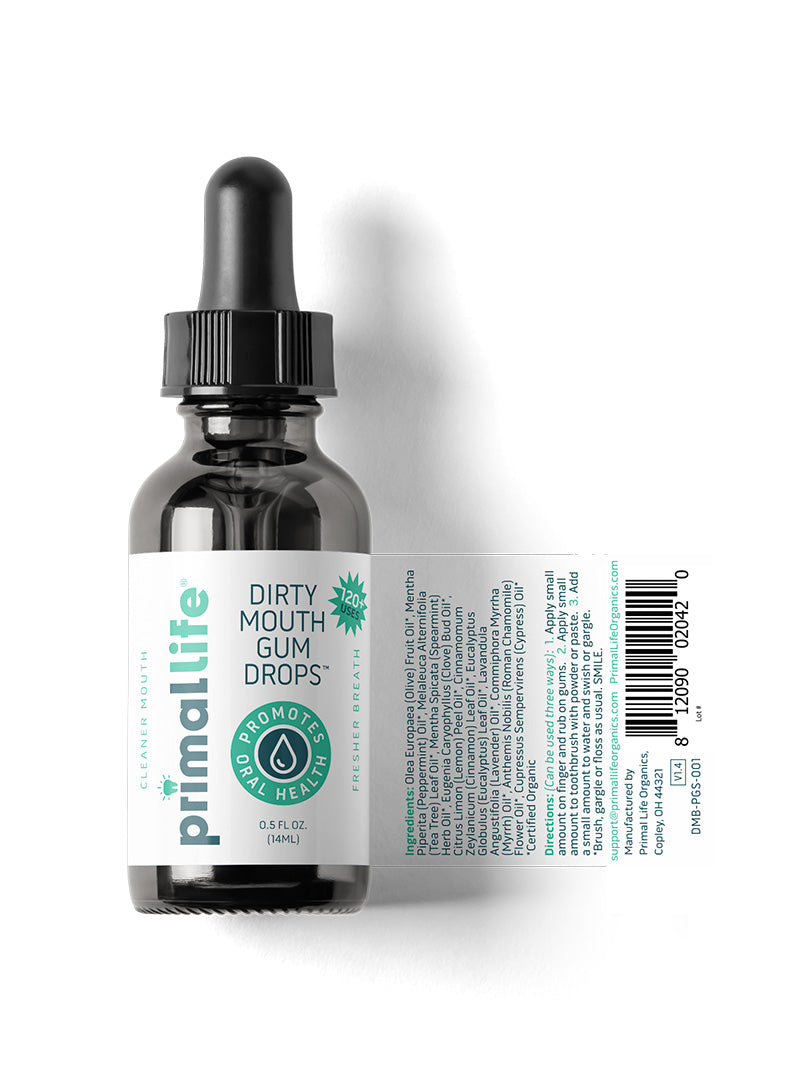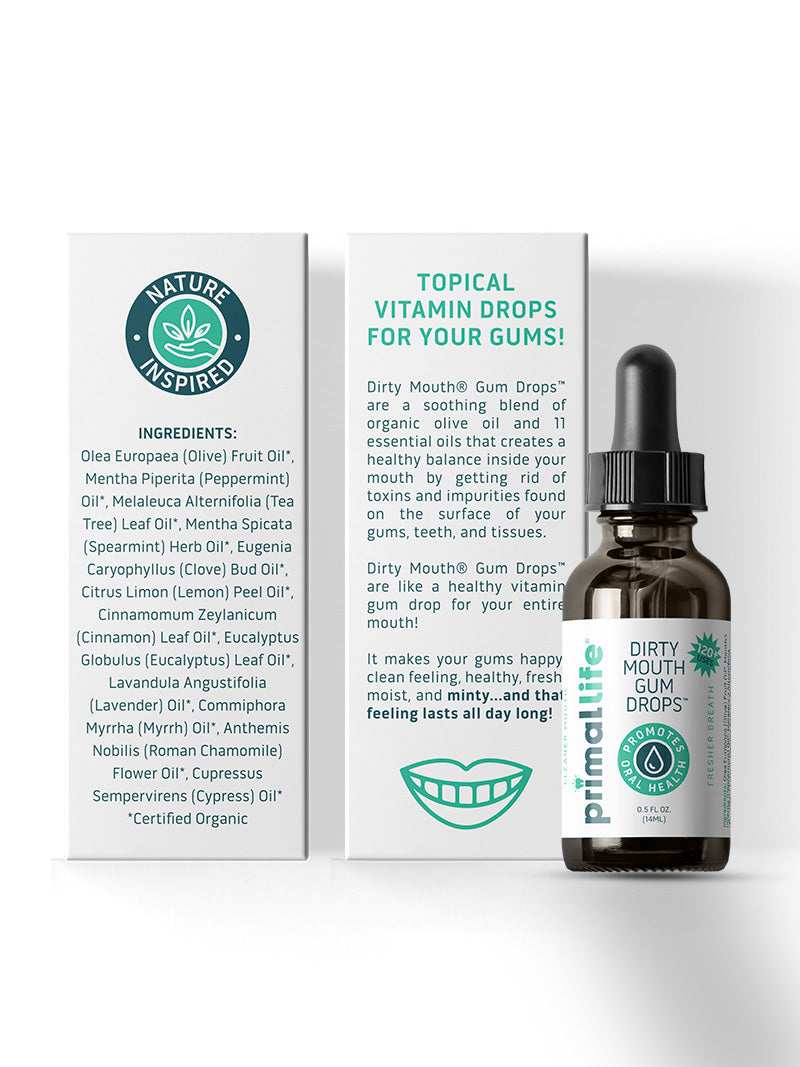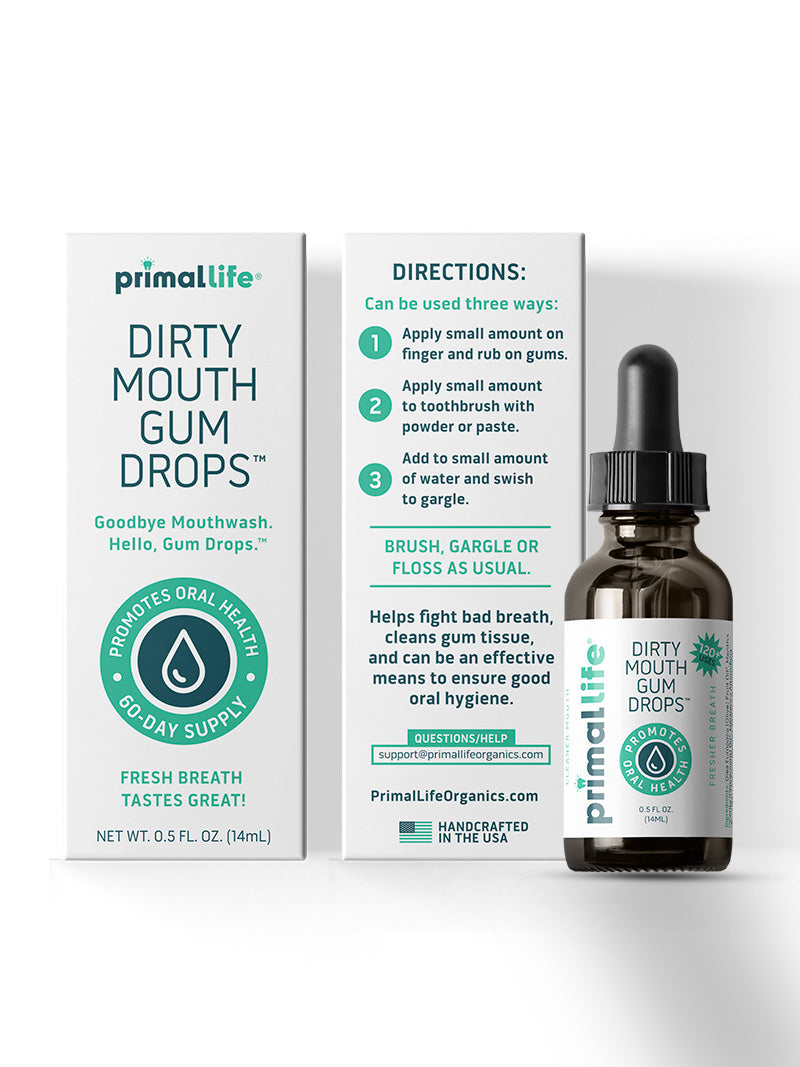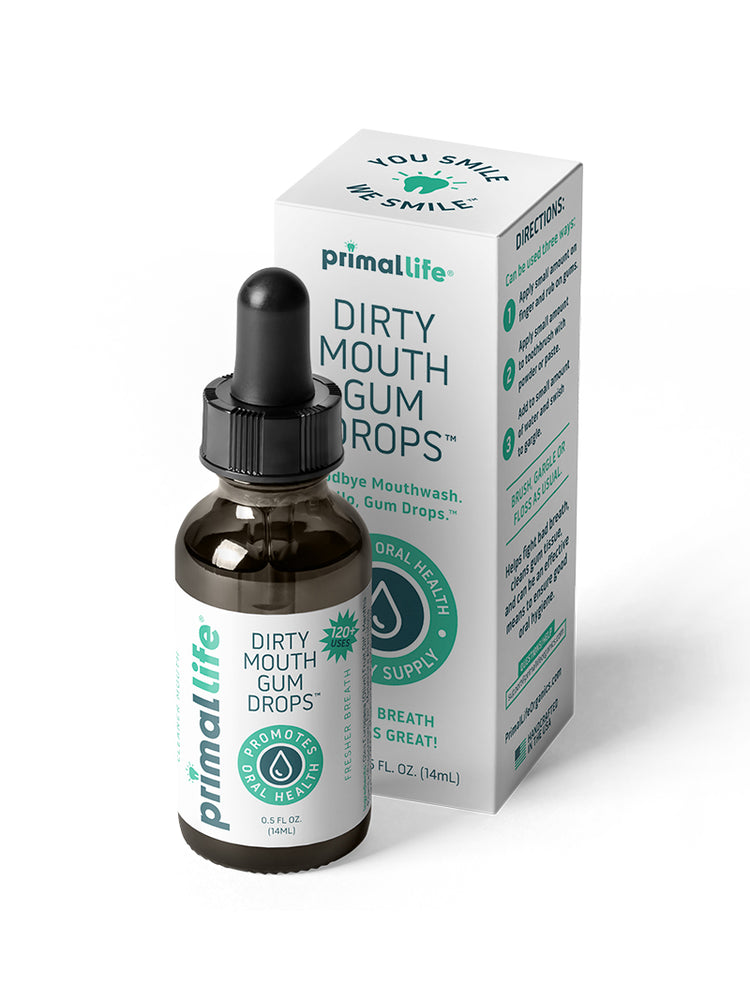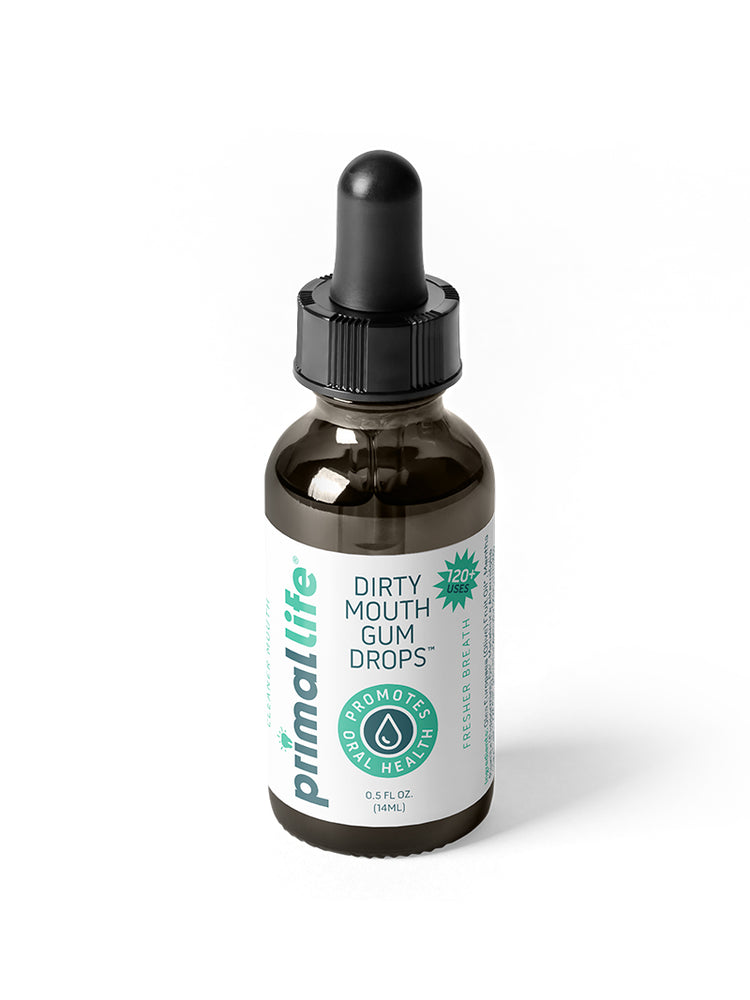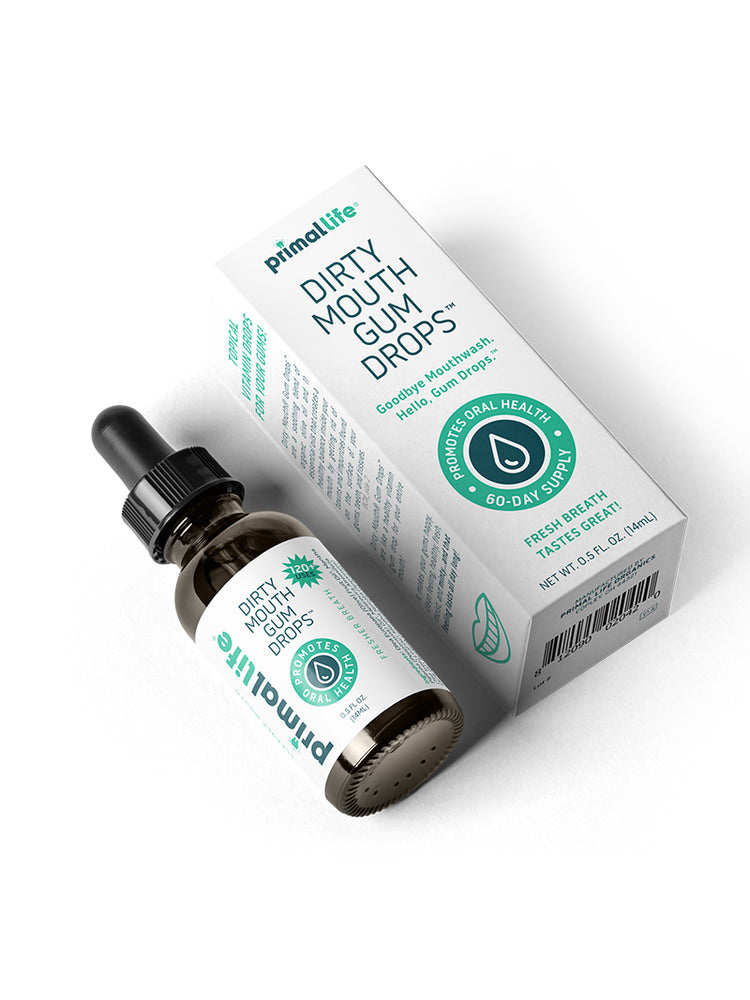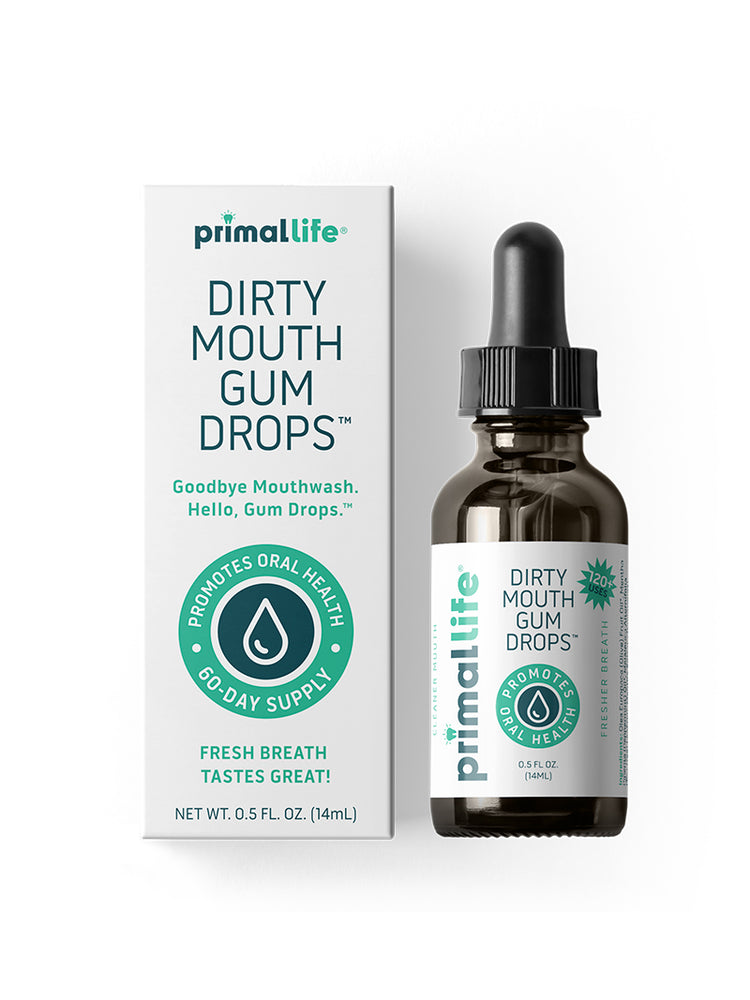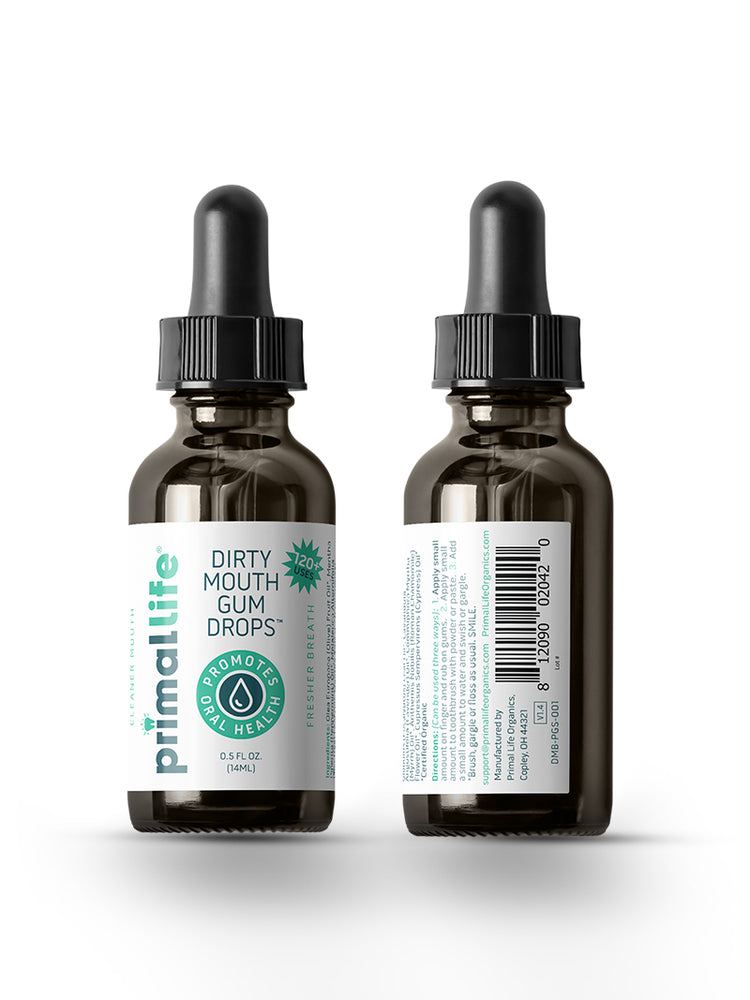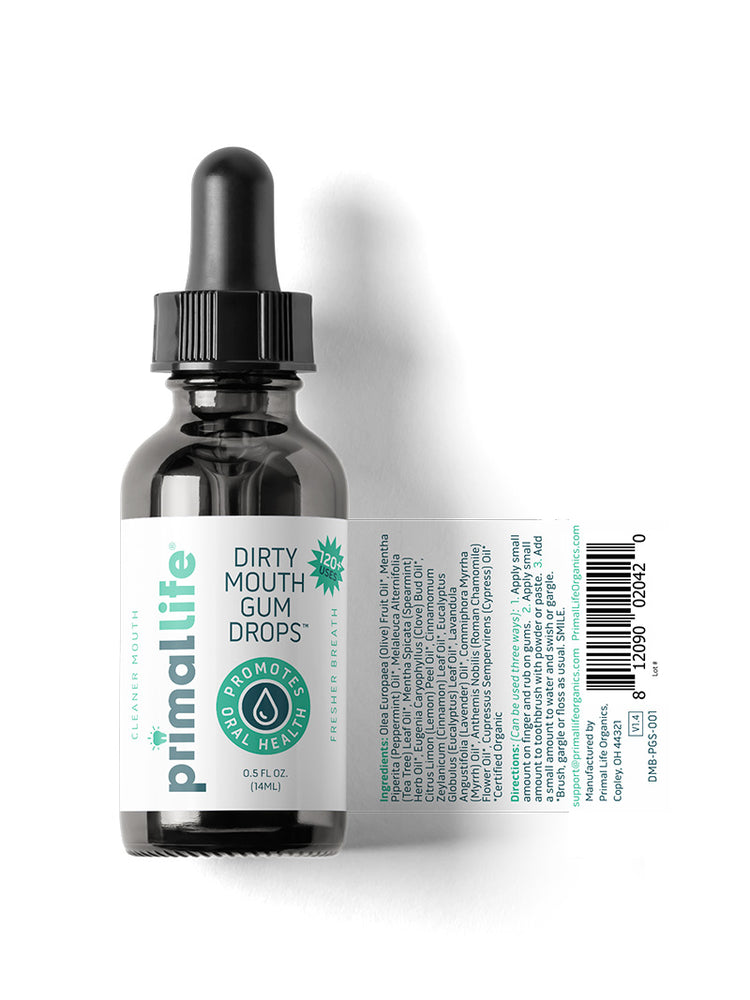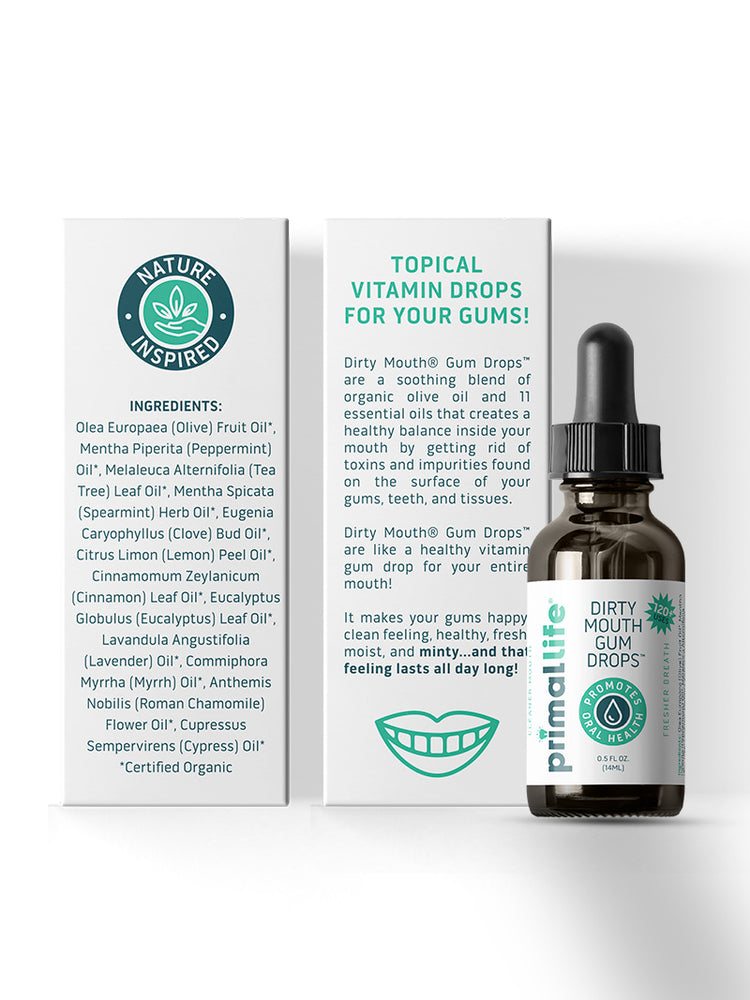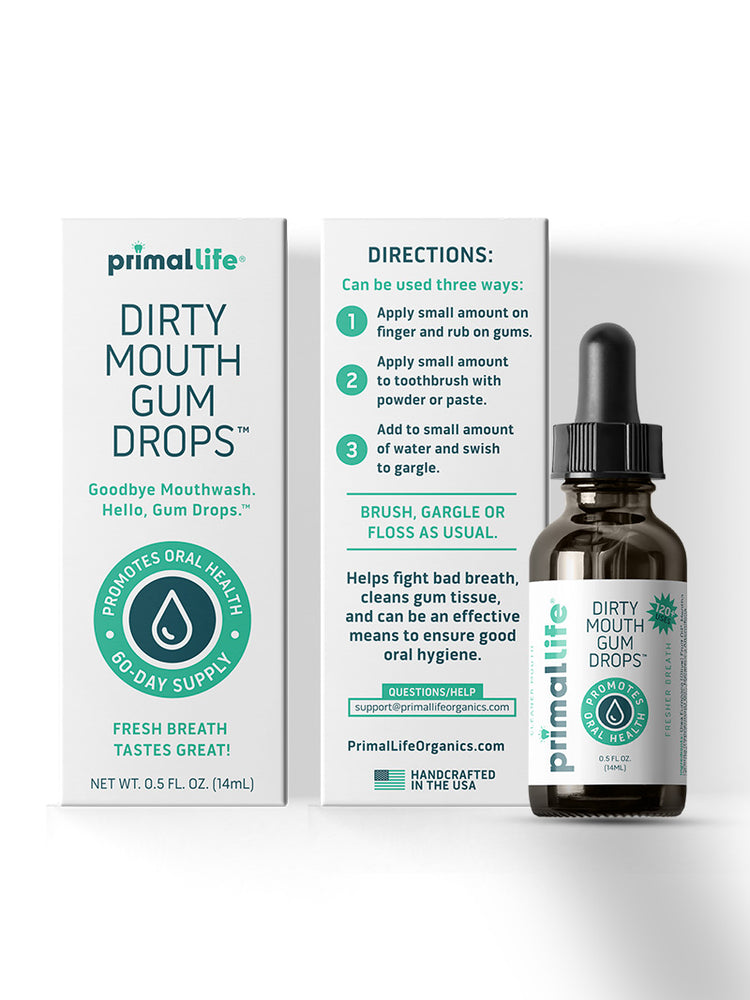How to Naturally Whiten Teeth FAST (Without the Harsh Chemicals)
This article was updated on January 22, 2024
When you hear a funny joke, do you automatically smile wide and laugh, or do you self-consciously cover your mouth and give your best closed-lip grin? If you’re too embarrassed to reveal your brown- and yellow-stained teeth to others, you’re definitely not alone!
It wasn’t too long ago that I was a member of the Stained Teeth Club. My smile was so dull and yellow that I even got called out for it on a first date! Not exactly romantic dinner talk, but it pushed me to find a solution.
If you’re anything like me, you’re frustrated by messy peroxide whitening systems that cause unbearable sensitivity without any lasting results. But you don’t have to surrender to those expensive bleach kits! If you really want dazzling white teeth without the pain and tooth damage, learn how to naturally whiten teeth using my revolutionary, non-toxic LED light system.
What Causes Stains and Yellow Teeth?
Let’s face it: Your smile is one of the most prominent and visible areas of your appearance. More importantly, it tends to be the very first thing people notice. So what does your first impression say?
It’s very likely that a lifetime of drinking coffee, munching on berries, and enjoying an evening glass of Merlot has gradually transformed your white and vibrant teeth into dull, stained, discolored duds. By understanding what caused your teeth to become yellow and brown, you can finally start to reverse the discoloration for good.
Food and Drinks
Food and drinks are the most common culprits of staining to the outer layer of your teeth. Coffee, wine, soda, and other dark-colored favorites easily stain tooth enamel and leave your smile looking dull and unattractive.
Here are a few of the worst offenders:
- Black coffee and tea
- Soda and dark juices
- Popsicles
- Soy sauce
- Balsamic vinegar
- Tomato sauce
- Red wine
- Blueberries, blackberries, raspberries
But don’t worry, you don’t need to quit your daily java cold turkey just to get white teeth. With the right natural tooth-whitening regimen, you can still enjoy your favorite indulgence without suffering the effects of dingy teeth.
Age
So many changes are inevitable with age, and now you can add “tooth discoloration” to the list that already includes wrinkles, wisdom, and spider veins. Age-related discoloration occurs when the inner dentin and outer enamel structures of the tooth both become discolored. It’s hard to avoid, especially since enamel thins with age and allows the discolored layers of your teeth to show through more distinctly.
Poor Habits
You don’t need me to remind you that smoking will kill you. But before it kills you, it’ll turn your smile an unpleasant shade of yellow-ish brown. The same goes for eating too much sugar — before diabetes threatens your bloodstream, all of that sugar will have already gone to work deteriorating your teeth.
Of course, poor dental hygiene habits can also make your smile look less than radiant. If you’re not already brushing and flossing twice a day, start now! You can’t change your poor habits in the past, but you can stop them now to help yourself in the future. Quit smoking, cut down on sugar, and throw your teeth a lifeline.
What’s Wrong With “Traditional” Whitening Methods?
Walk into your closest drugstore or big box retailer and you’re guaranteed to find at-home peroxide whitening kits that promise to whiten your teeth by 8 or 12 shades in just minutes per day. It’s definitely tempting to try these treatments, which is proven by the fact that Americans spend nearly $1.5 billion on at-home whitening products every year!
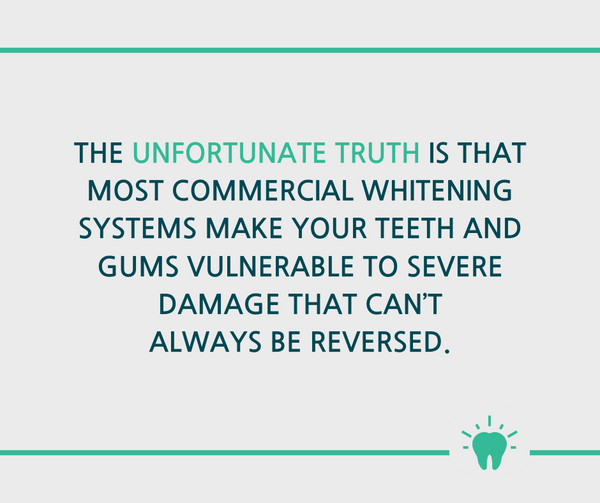
I was once a victim of the enticing promises of peroxide whitening kits as well. But the unfortunate truth is that most commercial whitening systems make your teeth and gums vulnerable to severe damage that can’t always be reversed. Even the professional systems used in the dentist office should be used with extreme caution.
Horrible Bleaching Chemicals
Carbamide peroxide is the main ingredient in most standard teeth-whitening products. It breaks down into hydrogen peroxide to bleach the color of your teeth through a chemical reaction. The ADA considers this a safe way to brighten teeth, but let’s stop to think about it: we are bleaching our teeth and exposing them to the same type of chemicals we’d use to clean a dirty bathtub. That shouldn’t be the standard for how to whiten teeth!
Research shows that strong whitening products, especially those containing between 30 and 35 percent of peroxide, can burn the soft tissue of the gums and create painful irritation. Many adults using at-home whitening kits have also reported systemic effects like an upset stomach and burning mouth and throat.
Worse yet, the whitening products we’ve been told to use and trust are known to weaken the enamel and dentin responsible for making our teeth strong and white. A growing body of research proves the dangers of peroxide whitening products:
- Bleaching agents increase porosity of surface enamel
- Bleaching agents steal minerals from teeth and reduce protein concentration
- Bleaching agents disrupt natural calcium-to-phosphate ratio
- Bleaching agents leach calcium from teeth
All of this means that repeated use of commercial whitening products puts your teeth at risk of becoming weak, brittle, and irreparably damaged.
Unbearable Sensitivity Issues
It’s not uncommon for dental professionals to recommend in-office whitening treatments using a 35% concentration of peroxide, plus at-home whitening products containing up to 20% carbamide peroxide. These intense concentrations deliver faster whitening results, but at a terrible price.
Tooth sensitivity is by far the most common side effect of traditional tooth whitening. You probably recognize sensitivity as that gut-wrenching zing you feel when you eat something hot or cold, feel cold air blow across your teeth, or accidentally touch a tooth too hard. Whitening causes painful sensitivity because the peroxide must penetrate your hard tooth structure and expose nerves in order to oxidize the molecules that cause staining.
A quick Google search for “tooth whitening sensitivity” will show you that this problem is widespread, yet for some reason we keep trusting traditional tooth-whitening systems and allowing them to cause us pain.
Expensive Dentist Visits
If you want your dental professional to handle your whitening treatment, be prepared for your costs to increase dramatically. In addition to paying for professional-grade whitening products, you’ll also need to cover the expenses of your dental appointments. So you’ll throw valuable time and money at your whitening treatments, just to end up with sensitive, damaged teeth that may not stay white for very long.
Now, how does that make any sense?
At-Home Teeth-Whitening Tricks
Nearly 30% of people don’t smile in pictures because they’re so embarrassed by their stained teeth. If you count yourself among that 30%, you can skip the painful over-the-counter whitening kits and expensive dental appointments by using the following at-home teeth-whitening tricks.
Choose the Right Snacks
Firm, crisp foods like apples, celery, and raw carrots give you a satisfying crunch while also cleaning your teeth. Think of them like natural toothbrushes that remove built-up plaque and bacteria. Strawberries and pineapple can also provide a little bit of extra shimmer and shine to your smile.
Avoid Dark-Colored Drinks
We all know this one, but it’s tempting to ignore. You may not be able to quit your coffee cold turkey, but it’s still important to cut out dark-colored drinks as much as possible. They can cause deep, permanent stains over time, so swap your soda for water at every opportunity.

Brush With Baking Soda Every So Often
Baking soda is a common ingredient in natural toothpaste, but you can also use plain old baking soda once a week to scrub away surface stains on your teeth. It also helps that baking soda contributes to a more alkaline oral environment, which in turn reduces the formation of plaque and bacteria in your mouth.
Brush With Activated Charcoal a Few Times a Week
Activated charcoal is one of those incredible multi-purpose natural ingredients that I just love. When it comes to whitening your teeth, activated charcoal absorbs the plaque and bacteria on your teeth known to cause discoloration. It might surprise you that this fine-grained black powder can whiten your teeth, so maybe you need to give it a try and see it to believe it.
Apple Cider Vinegar and Water Swish
Stubborn stains are the toughest to get rid of, but they’re no match for powerful and natural ACV. Combine a teaspoon of ACV with a ½ cup of water. Swish for 30 seconds, spit, and rinse. Just be sure to avoid overusing this natural remedy because ACV is highly acidic and can erode enamel if misused.
Oil Pulling
Yes, oil pulling, another natural favorite! This traditional Indian folk remedy is more popular than ever before because it naturally improves oral hygiene, removes toxins from the mouth, and helps your teeth look a few shades whiter.
Oil pulling is simple — place a spoonful of coconut oil, sunflower oil, or another natural oil into your mouth and swish for 20 minutes. Once time is up, spit the oil into the trash and rinse your mouth. The gross toxins, bacteria, and debris in your mouth will be pulled out by the oil, leaving your teeth and gums healthier and brighter.
LED Light
For whiter teeth without any bleach, tooth damage, or sensitivity, try a natural LED light whitening kit. Instead of forcing harmful chemicals into the hard structure of your teeth, LED whitening harnesses the power of blue and red light to safely and naturally brighten your smile.
How to Get Whiter Teeth With LED Teeth Whitening
If you want a safe, gentle, comfortable, and chemical-free way to whiten your teeth, look no further than LED lights! The incredibly powerful combination of red light, blue light, and an activated charcoal gel will not only brighten your smile, but also enhance your oral health and relieve pain.
How Does LED Light Whiten Teeth?
LEDs, or “light emitting diodes”, produce light differently than a standard incandescent or fluorescent light bulb. Though LEDs release extremely bright light when an electrical current is present, they don’t produce the wasted heat energy that other types of lights do. This makes it possible for LEDs to deliver total efficiency from the second they turn on.
LED light functions as a catalyst to the whitening process and accelerates the results of any natural whitening agent you apply to your teeth. Thanks to the power and efficiency of LED lights, you only need 10 to 20 minutes a day to see dramatic results.
Use a Whitening Agent Made With All-Natural Ingredients
It’s important to remember that LED light technology can’t really whiten your teeth on its own. You need to apply a whitening agent for the LED light to stimulate. You know to skip the harsh peroxide, but what should you use instead? Try a natural activated charcoal gel like our Real White Whitening Gel instead!
Our Real White Whitening Gel is formulated with the very best natural ingredients to help your teeth look whiter and feel stronger:
- Extra Virgin Olive Oil nourishes and protects gum tissue. It’s a rich, thick oil that creates a strong base for natural whitening agents.
- Bentonite Clay is a soft clay with powerful detoxification properties. Its negatively charged ions attract positively charged toxins and heavy metals, latch onto them, and draw them out of the mouth. This makes it possible for bentonite clay to gently scrub and polish your teeth while also remineralizing them. In other words, bentonite clay is the exact opposite of peroxide bleaches! It enhances your oral health as you whiten instead of leaving your teeth brittle and sensitive.
- Essential Oils like peppermint, tea tree, wintergreen, cinnamon, roman chamomile, and lavender help this natural whitening gel smell and taste incredible. You won’t cringe as you apply the formula to your teeth — you might even crave it instead! As an added bonus, essential oils offer powerful antibacterial, anti-inflammatory, and antimicrobial properties to revitalize and restore your oral health.
- Activated Charcoal quickly absorbs plaque and other unwanted compounds that stain your teeth. By binding to the toxins and pulling them out of your mouth, activated charcoal helps leave your teeth much brighter and whiter than before.
Once you experience the whitening difference that natural ingredients can create, you’ll wonder why anybody bothers to use peroxide at all.
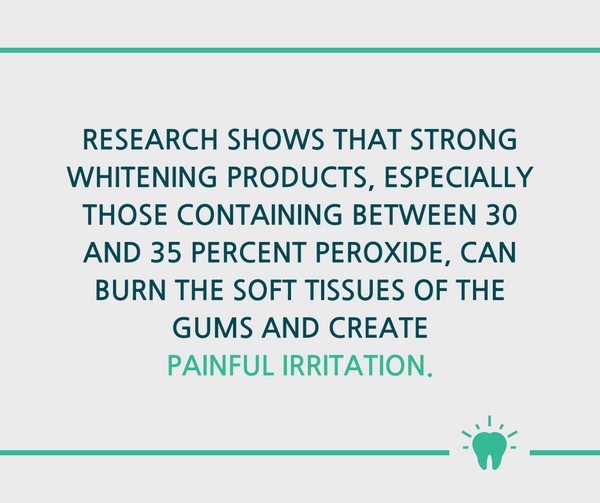
It’s Simple and Safe
LED teeth whitening couldn’t possibly be simpler, safer, or more affordable! To be honest, it also makes whitening your teeth fun.
LED teeth whitening is simple enough to do in your sleep:
- Apply the Real White Whitening Gel to your mouthpiece (a little bit goes a long way!)
- Insert the mouthpiece into your mouth and let your teeth rest lightly
- Wash dishes, read, or fold laundry for the next 16 minutes
- Remove mouthpiece and rinse with warm water
- Repeat three to four times per week at first, then limit to two or three times per week to maintain your results.
It’s also very safe. LED lights don’t cause ionizing radiation, which means they don’t carry the risks of UV light. You can enthusiastically whiten your teeth without the need to worry about cell mutations, cancer, or any other nasty side effects.
How to Keep Your Smile White and Prevent Stains
After devoting your time, effort, and money to whitening your smile, you definitely want to take small steps to prevent staining in the future. After all, you wouldn’t throw dirt all over your car after getting it washed, right?
Daily Brushing and Flossing
The importance of regular brushing and flossing can’t be overstated. If you can diligently brush and floss every morning and night, you’ll stop plaque and tartar from forming on your teeth and gums, which means you’ll also stop stains in their tracks!
Just be sure to use the right oral care products. Instead of a conventional toothpaste loaded with toxins like fluoride, try using an all-natural cleaner like Dirty Mouth Toothpowder. A combination of bentonite clay, white kaolin clay, aluminum-free baking soda, and organic essential oils combine to remineralize your teeth, soothe your gums, remove plaque and bacteria, and give you a more confident smile.
Use The Right Toothbrush
When it comes to stains on your teeth, don't underestimate the power of a toothbrush!
Research shows using an electric toothbrush can remove more plaque and stains than using a manual toothbrush. But it DOES matter what type of electric toothbrush you use.
Many electric toothbrushes with oscillating heads actually can damage your teeth and gums. To avoid this, we recommend using a Sonic Toothbrush.
At 35,000 pulses per minute, the Primal Life Real White Sonic Toothbrush brushes away plaque and stains without damaging your enamel or gums. Featuring 5 brushing modes, including one for whitening and one for gum care, the Sonic Toothbrush provides a thorough but gentle clean to keep your teeth and gums healthy.
Quit Unhealthy Habits
We all have a vice. Do you smoke? Drink 4 cups of coffee a day? Eat too much sugar? Whatever your unhealthy habit is, try to kick it to the curb so that your dazzling white teeth stay that way. Even small changes add up to big results, especially when combined with a diligent brushing and flossing routine. You can do it!
The Bottom Line: Get the Whiter, Brighter Smile You Deserve
Now you know — you don’t need to sell your soul to the peroxide devil to get a beautiful white smile. In fact, you don’t need to go within a mile of those awful chemicals at all!
LED light teetth-whitening makes it possible to naturally, safely, and painlessly whiten your teeth while improving your oral health. Without the threats of sensitivity, brittle enamel, and unpredictable results, you can finally flaunt a smile that looks like it belongs on the red carpet, not the dentist's chair.
Resources:
1. https://my.clevelandclinic.org/health/diseases/10958-tooth-discoloration2. https://www.healthline.com/nutrition/whiten-teeth-naturally
3. https://www.ncbi.nlm.nih.gov/pmc/articles/PMC4229680/?_ga=2.8520113.546738981.1553004399-1220425171.1553004399
4. https://www.ncbi.nlm.nih.gov/pubmed/10518866
5. https://www.healthline.com/health/activated-charcoal-teeth-whitening#Charcoal-teeth-whitening
6. https://www.ncbi.nlm.nih.gov/pmc/articles/PMC3466022/?_ga=2.16627894.1252143398.1512077656-970936839.1510722429







